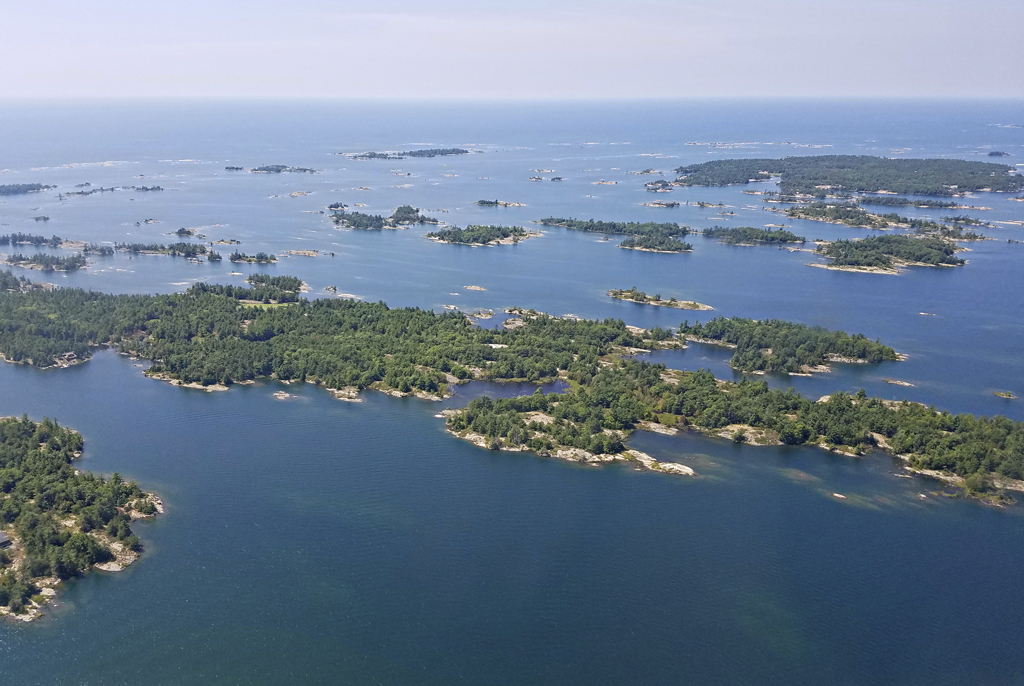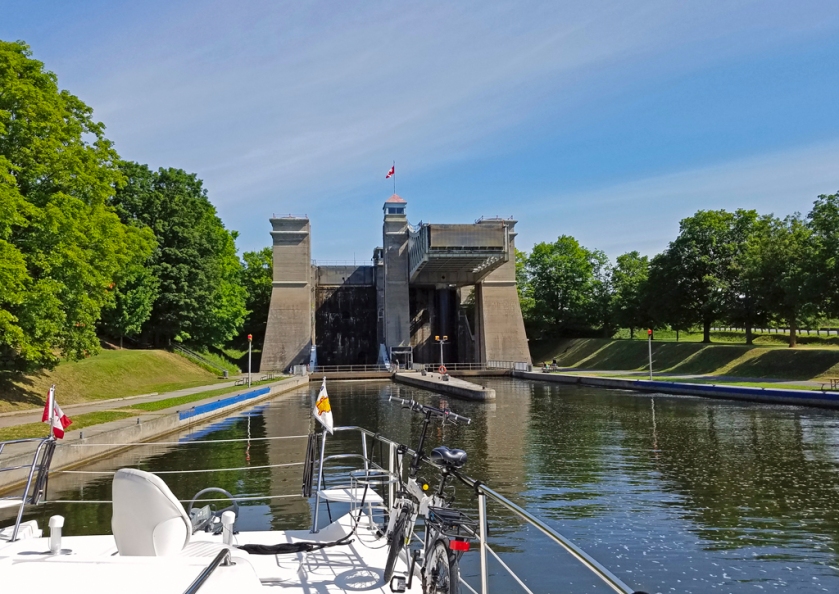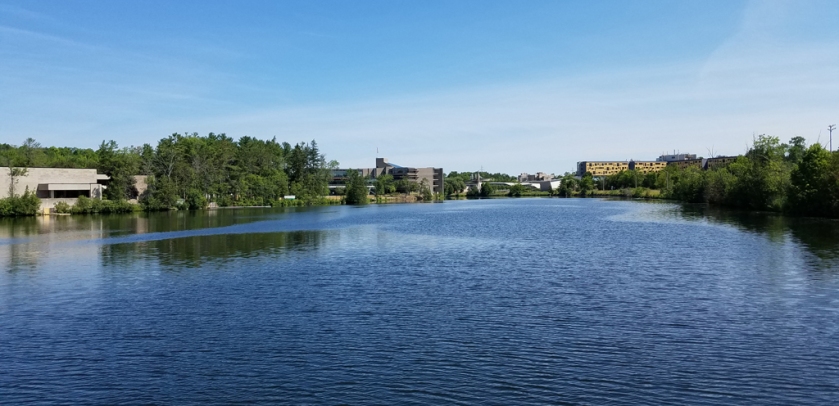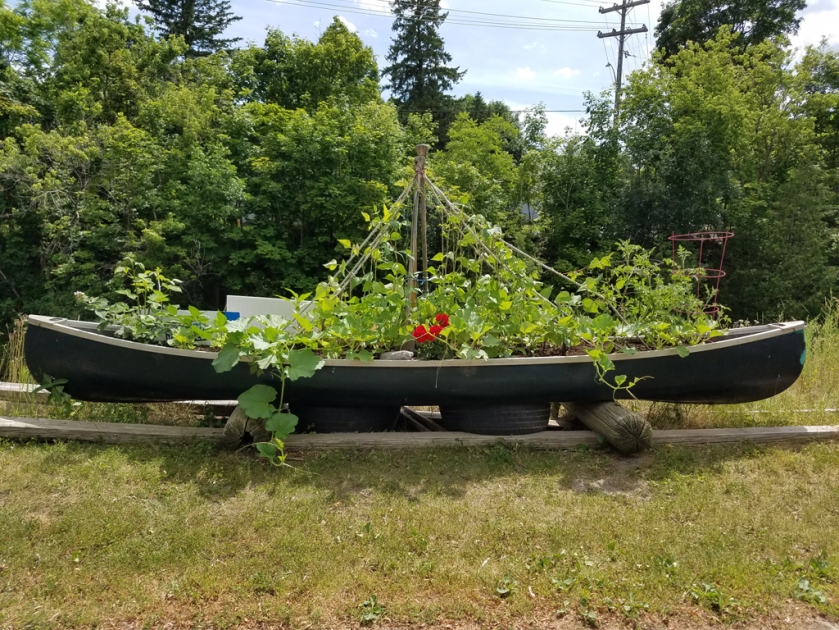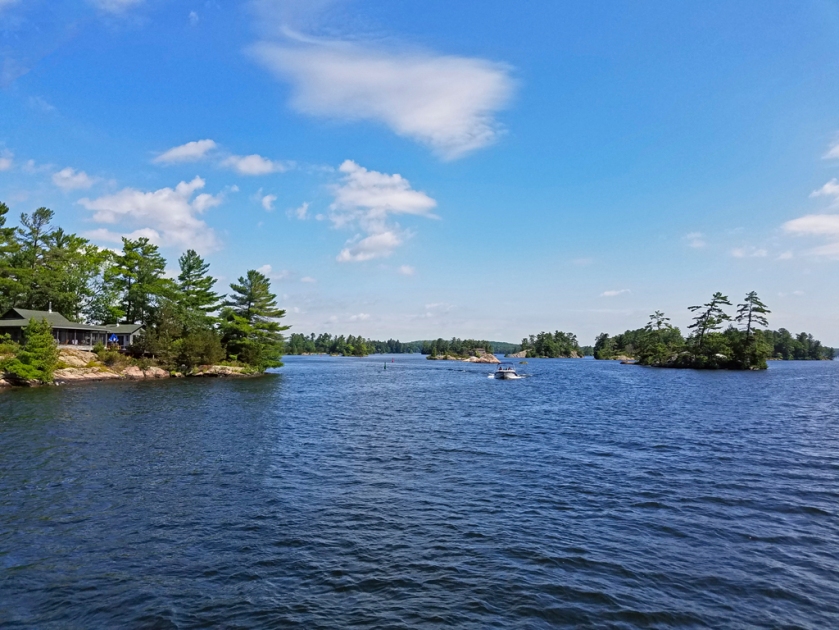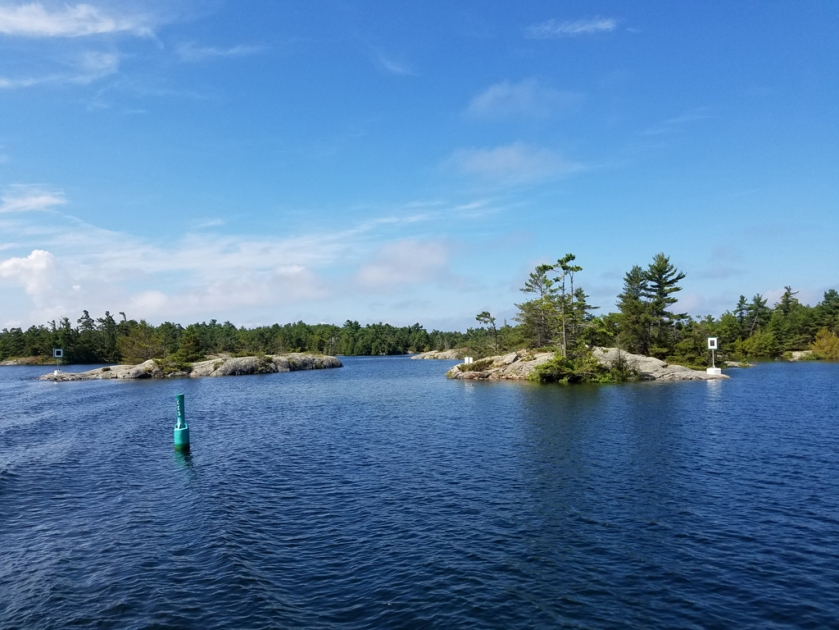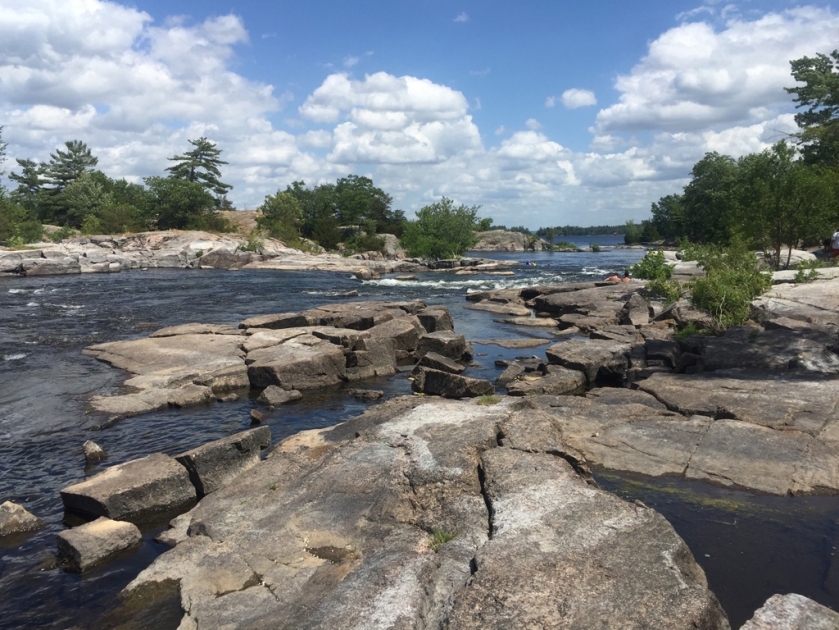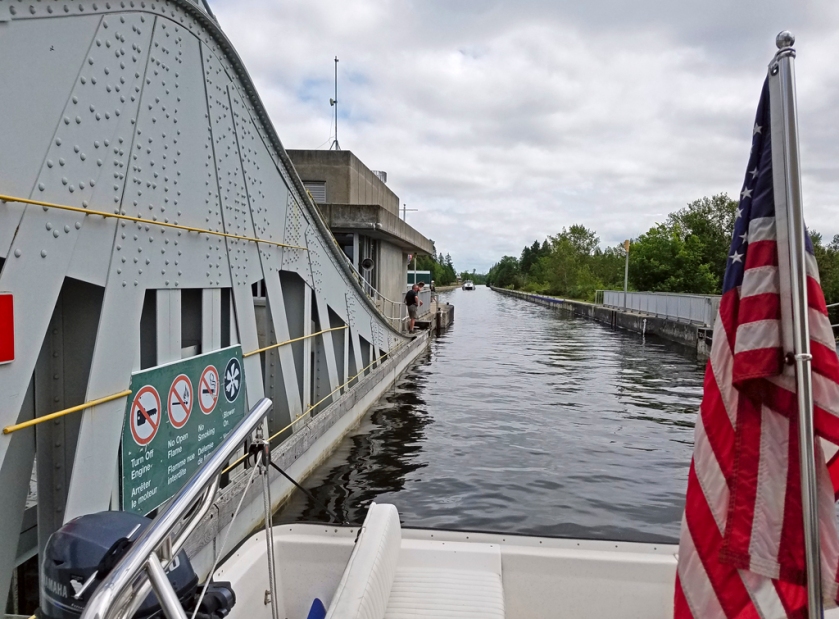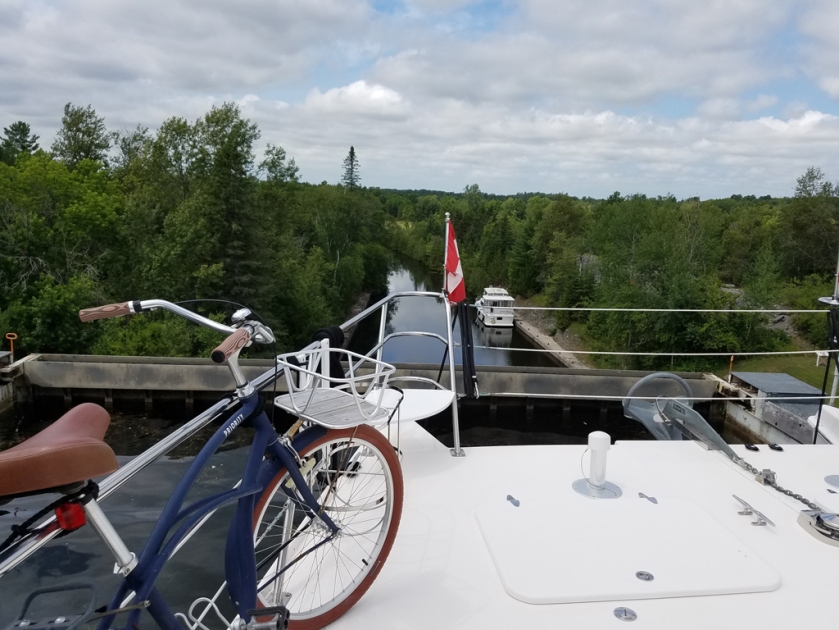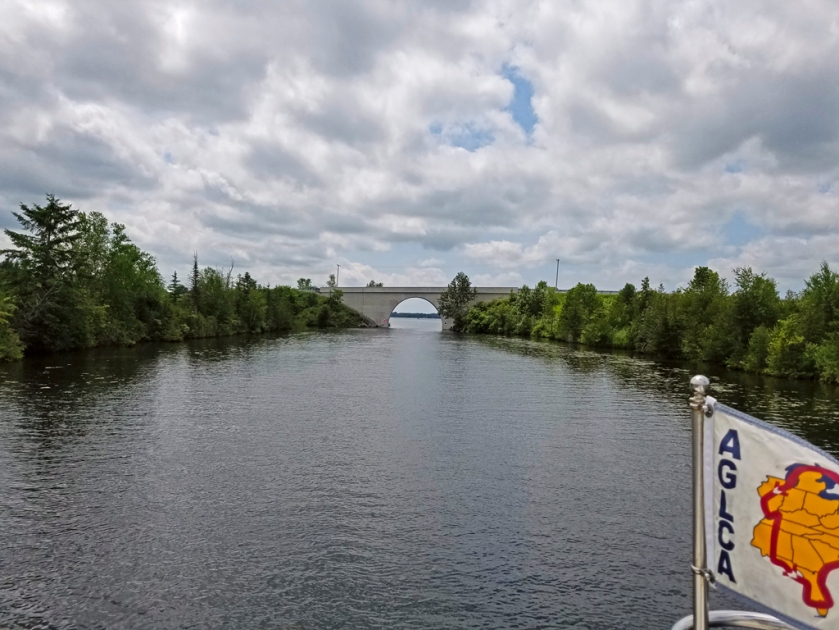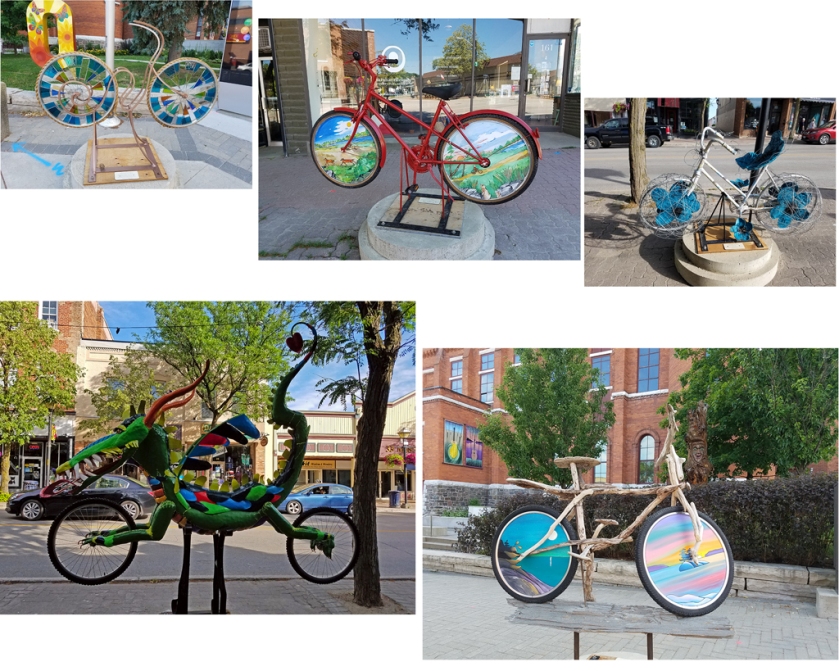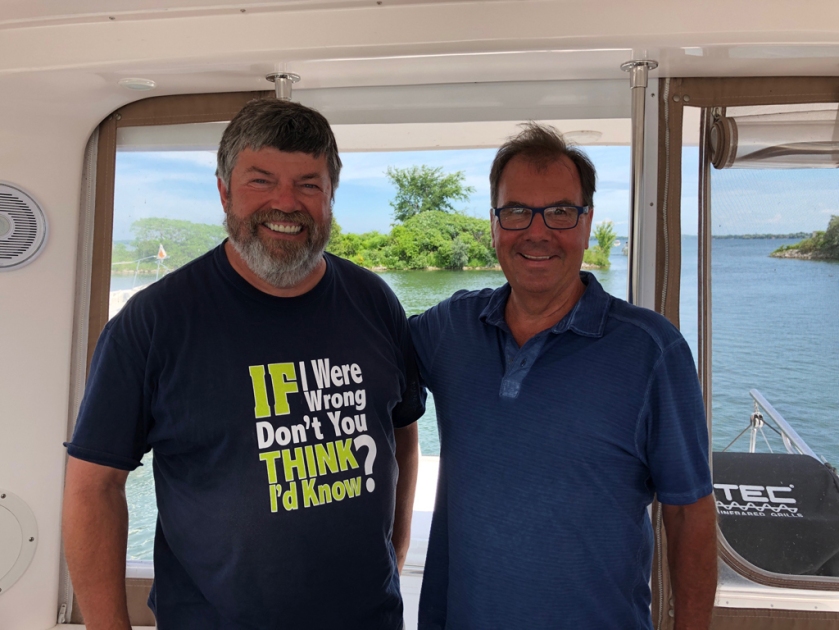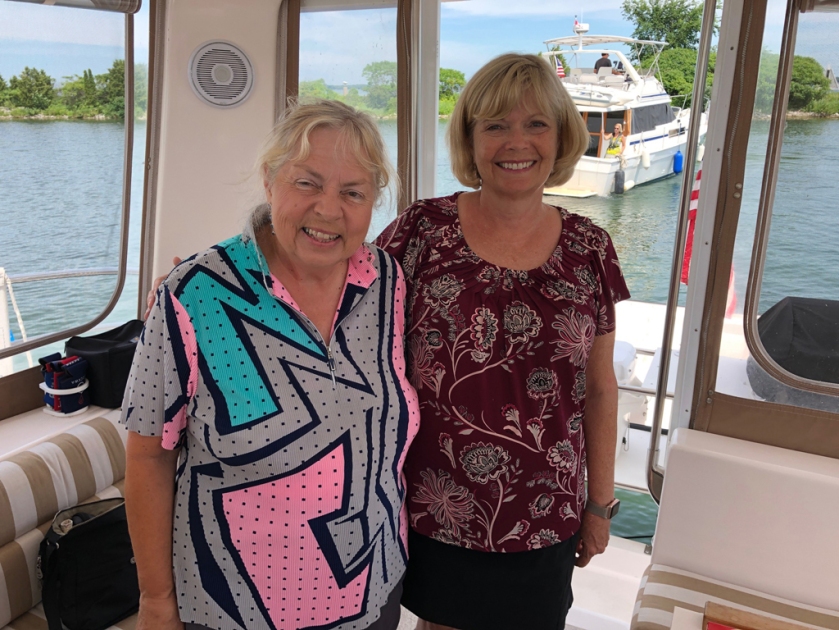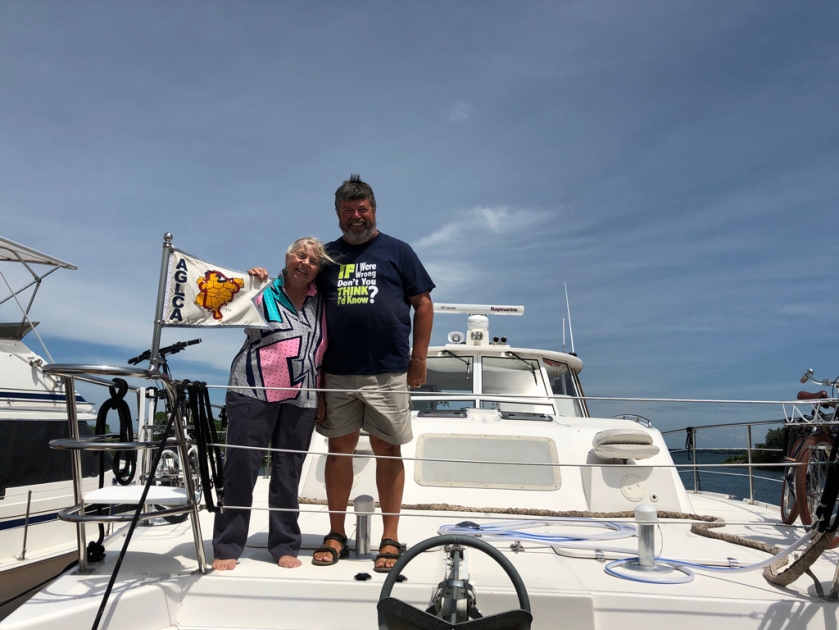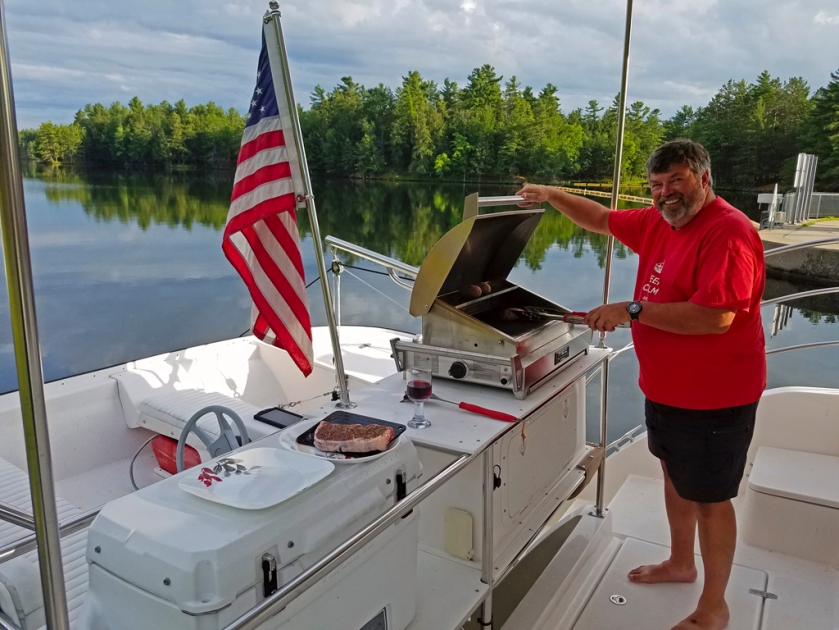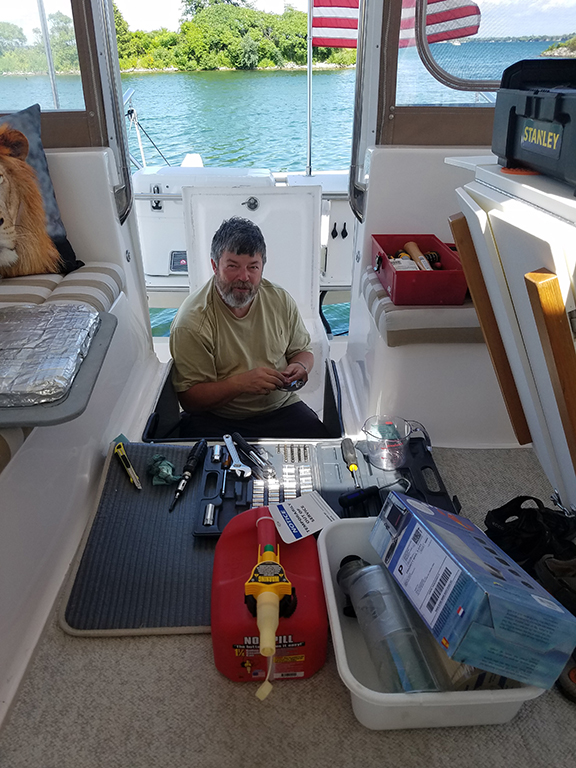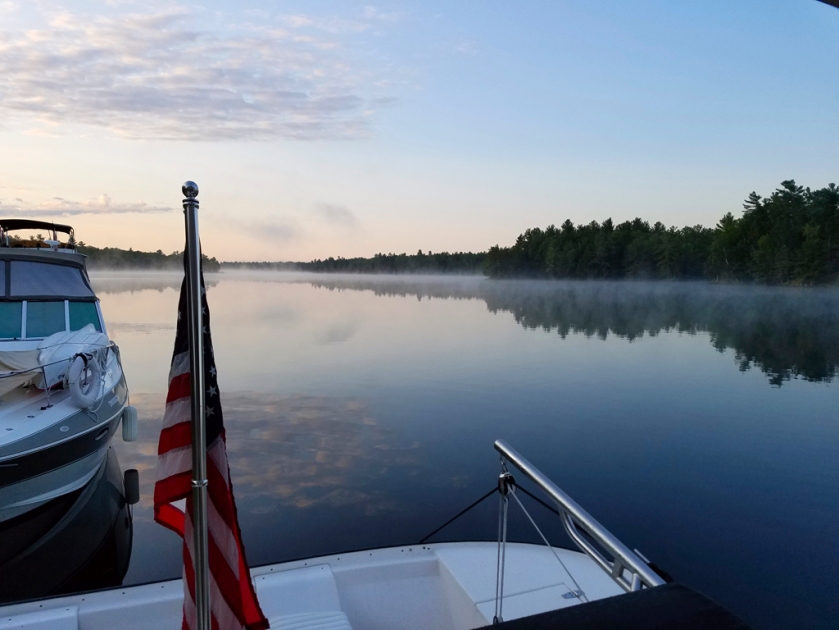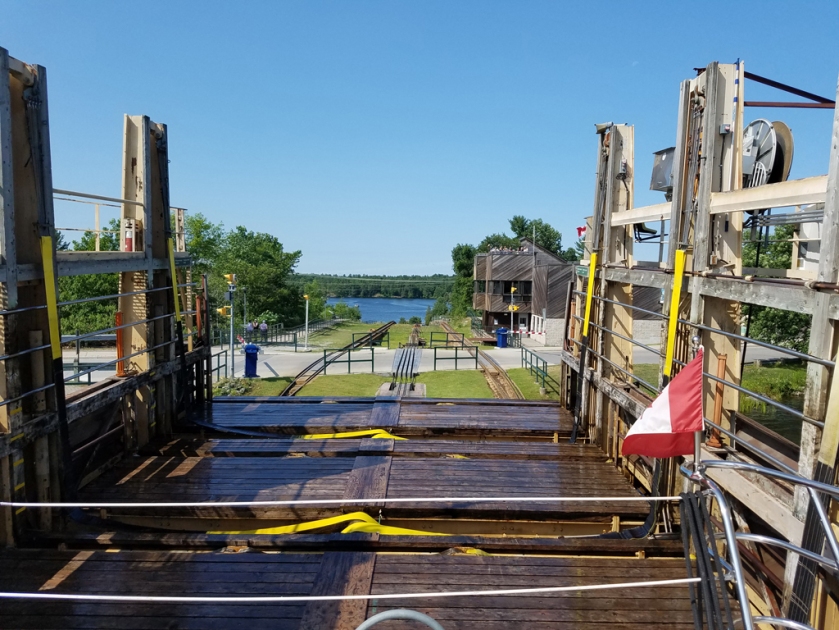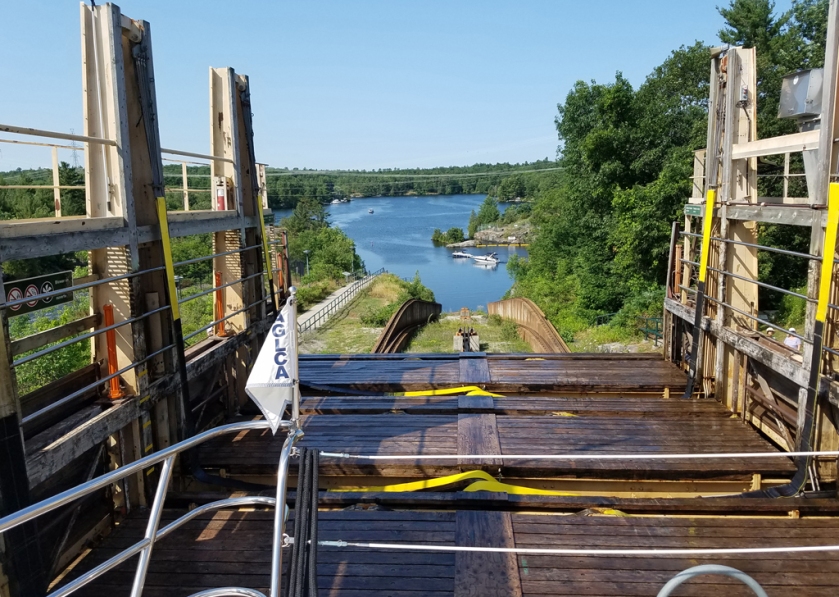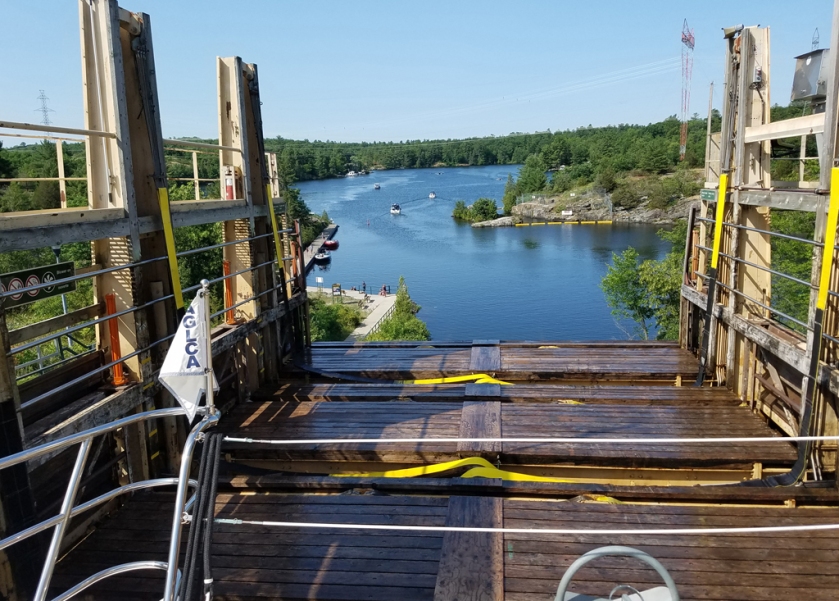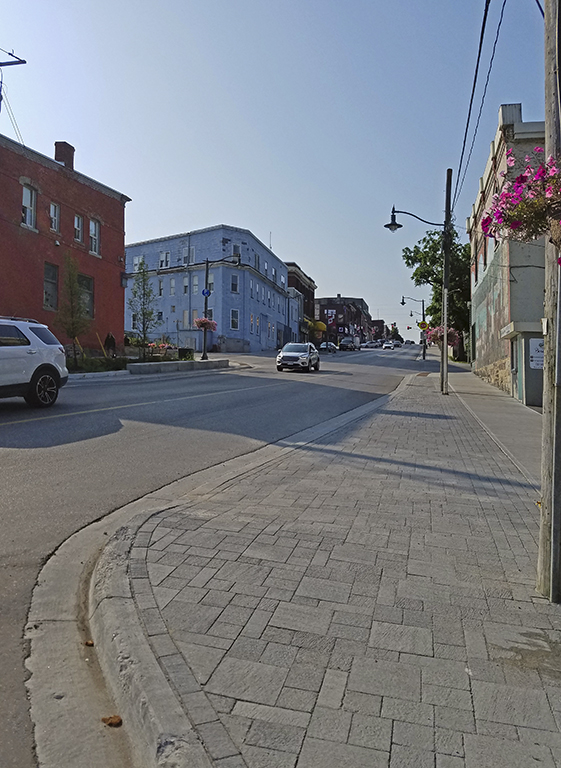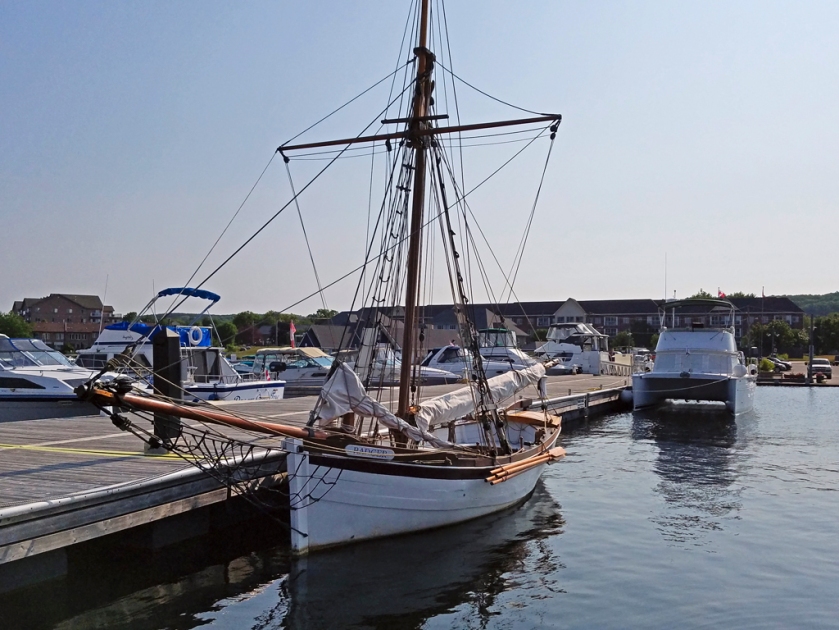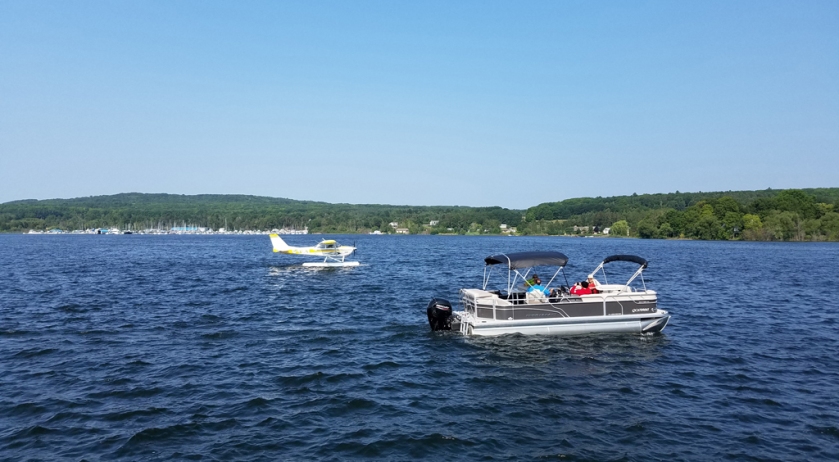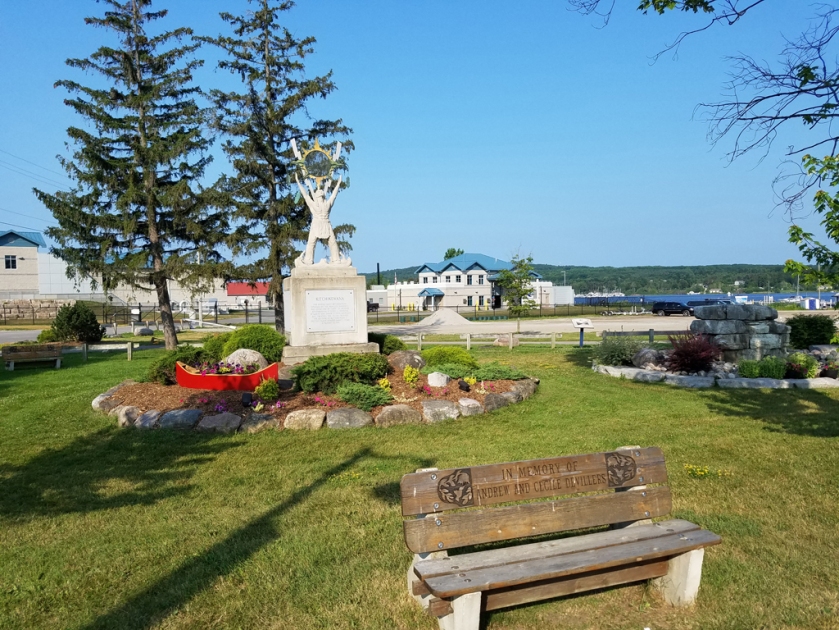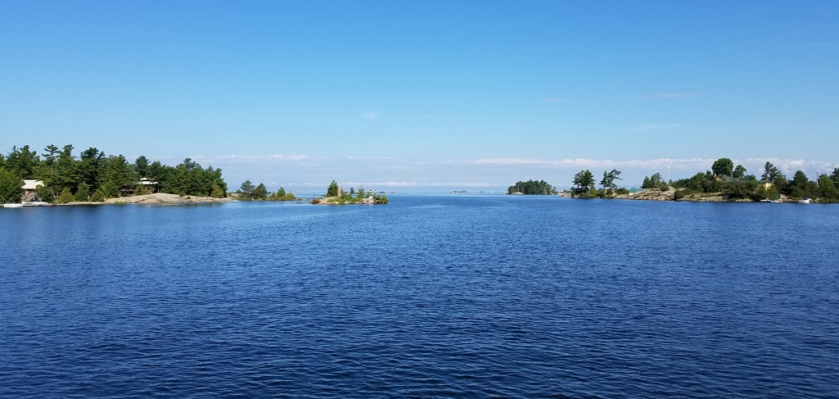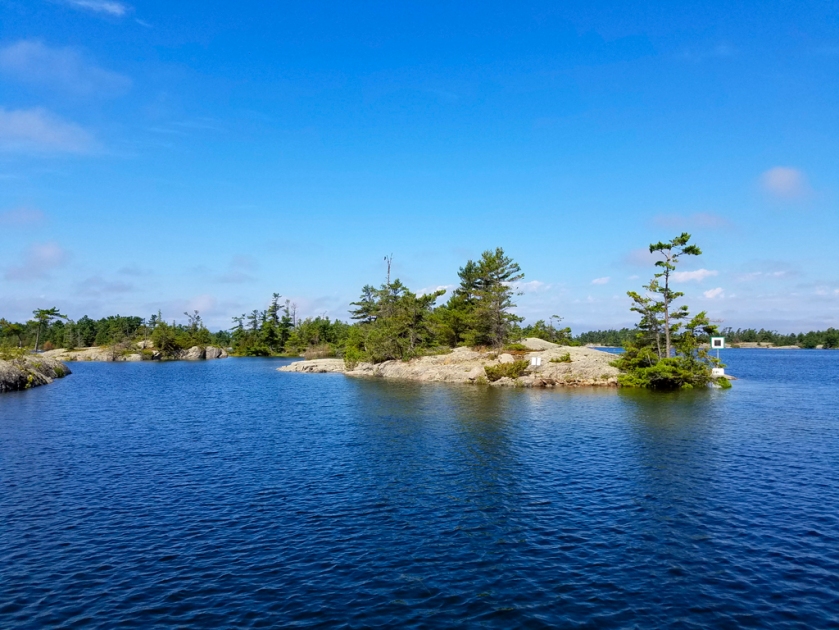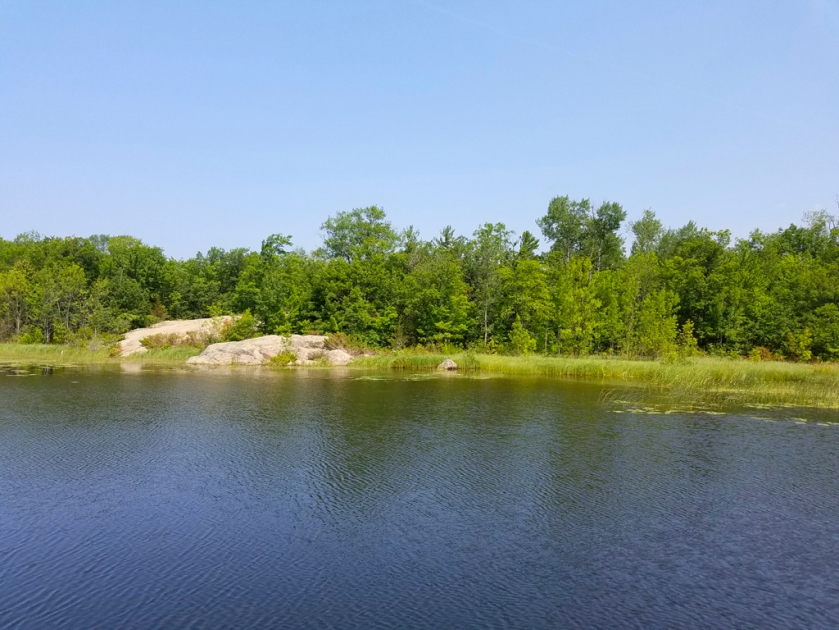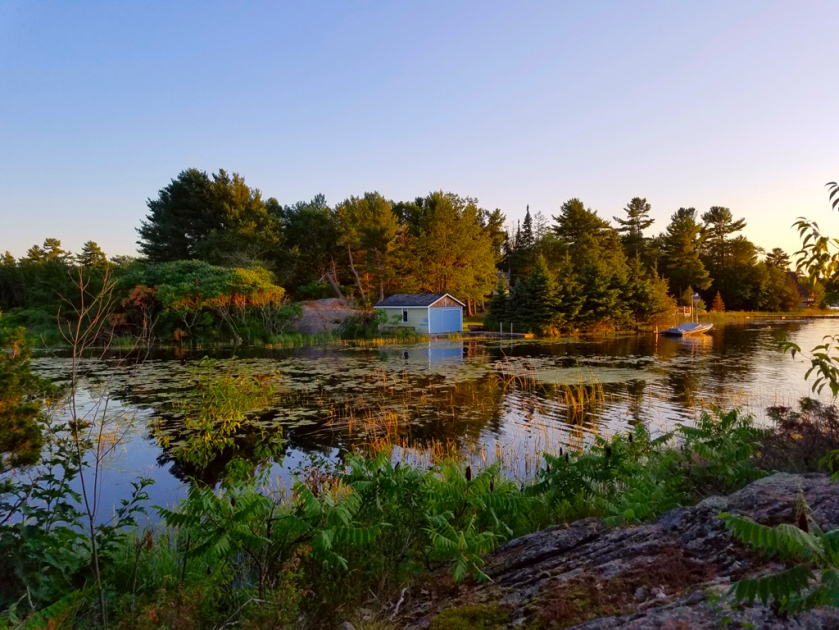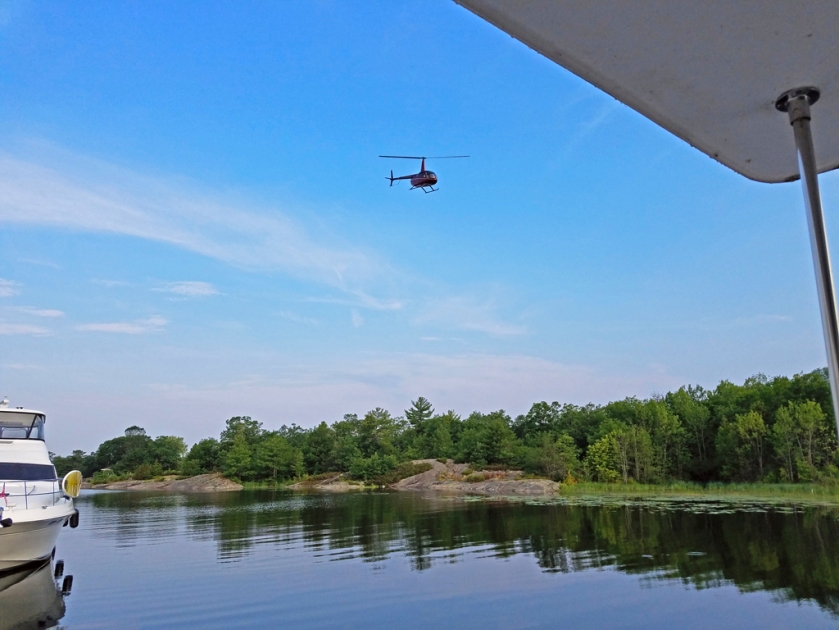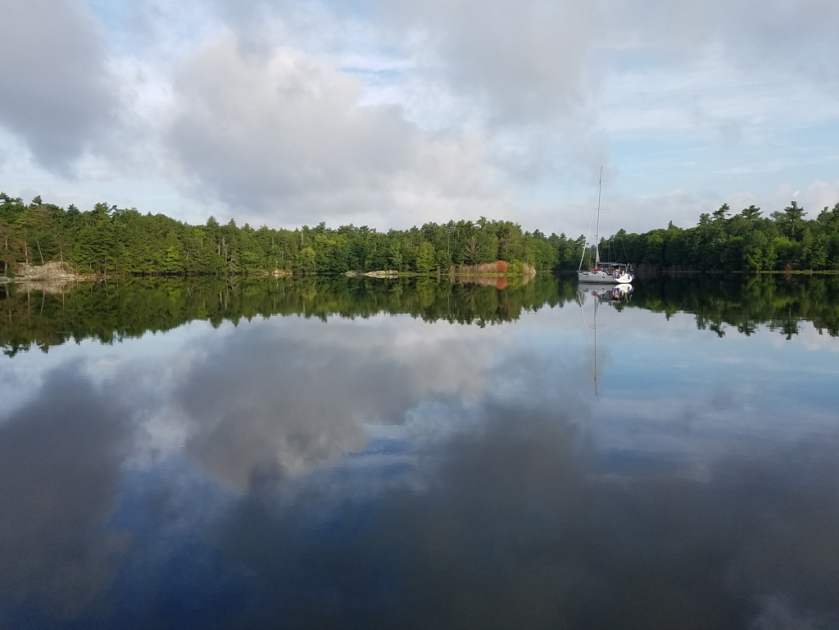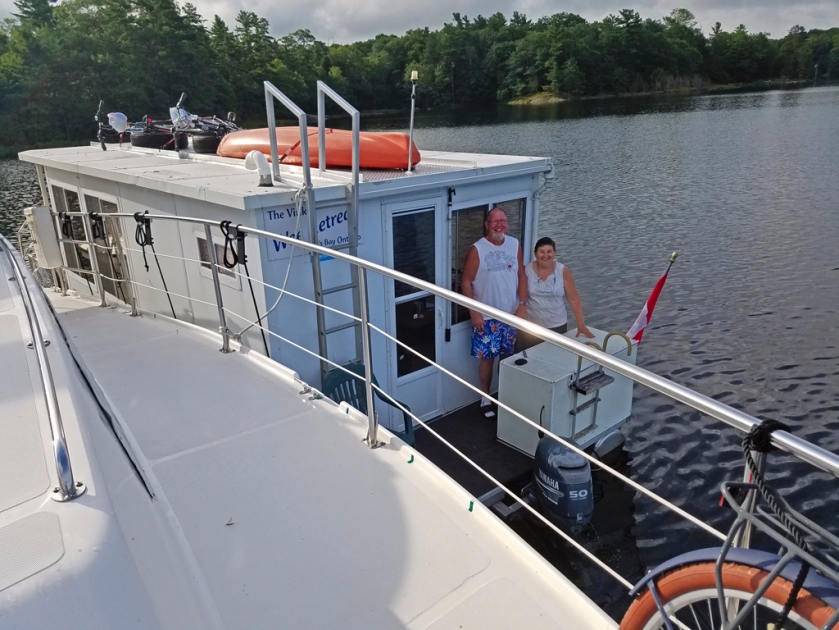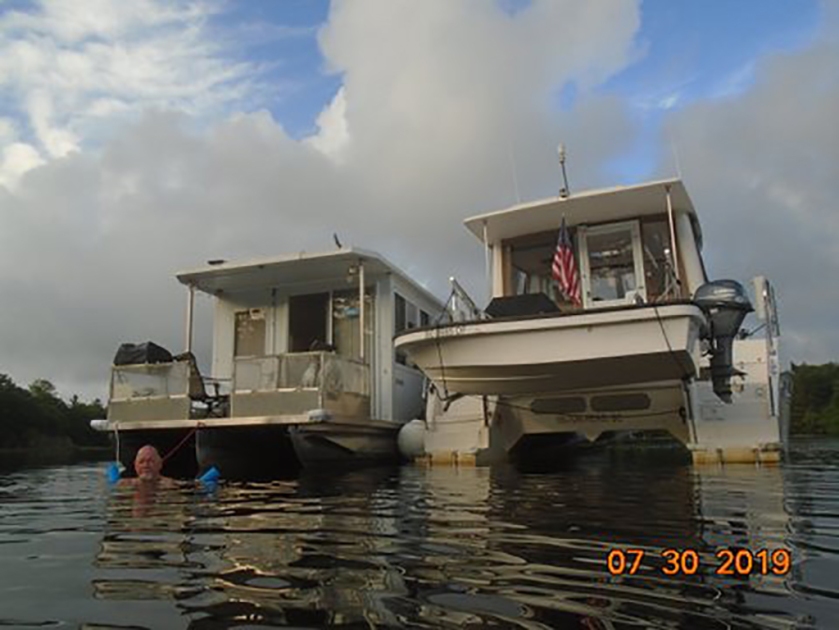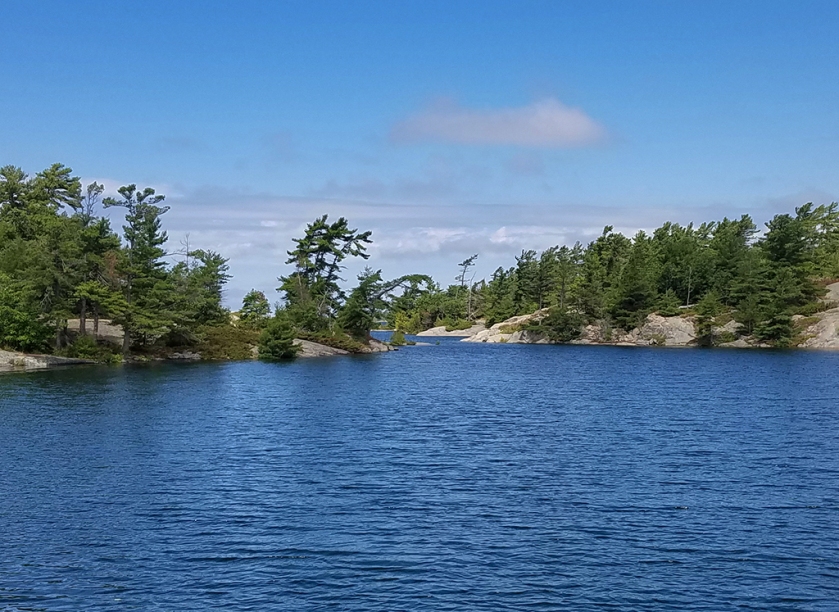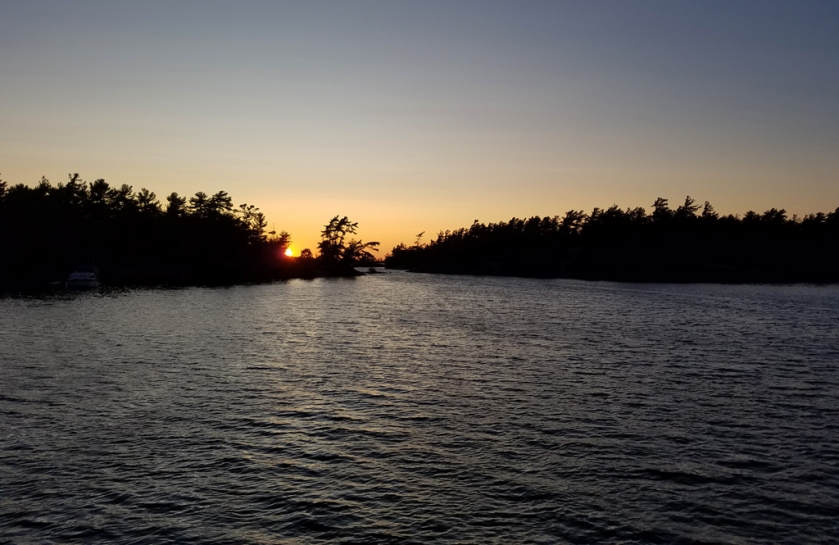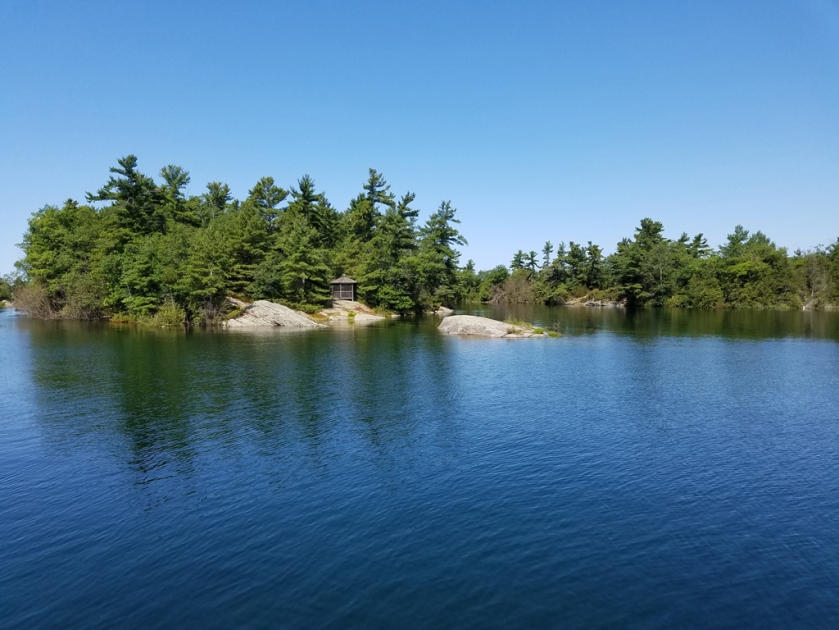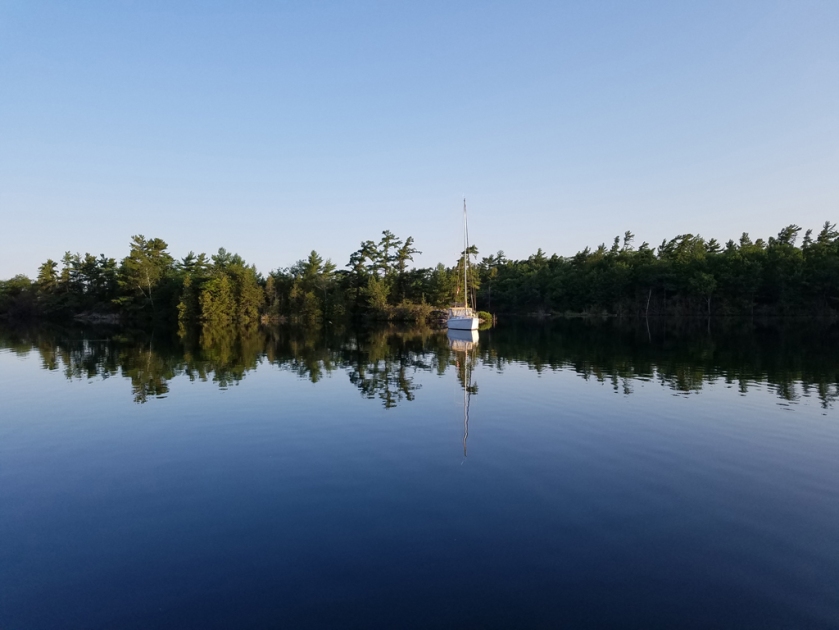Henry’s Fish Restaurant, on Frying Pan Island, is considered a must stop on the Great Loop. We knew it would get crowded, so we set off in good time and arrived around 11am. It was quite something watching all the arrivals, including seaplanes, a large charter group, and pleasure boats as large as 50 feet and as small as wave runners. Arrivals were wrangled by the new owner’s father acting as dockmaster, and wrangled is the right word. Only the larger pleasure boats call on the radio and ask for dock assignments, the smaller boats just zoom in and park wherever they please, regardless of whether they are blocking other boats. The docks are long fingers, designed to hold several boats one behind the other, so it matters who ties up where! Henry’s is on an island, and typically serves about 350 meals on a weekday, and over 700 every day on weekends. Lunch is busier than dinner.
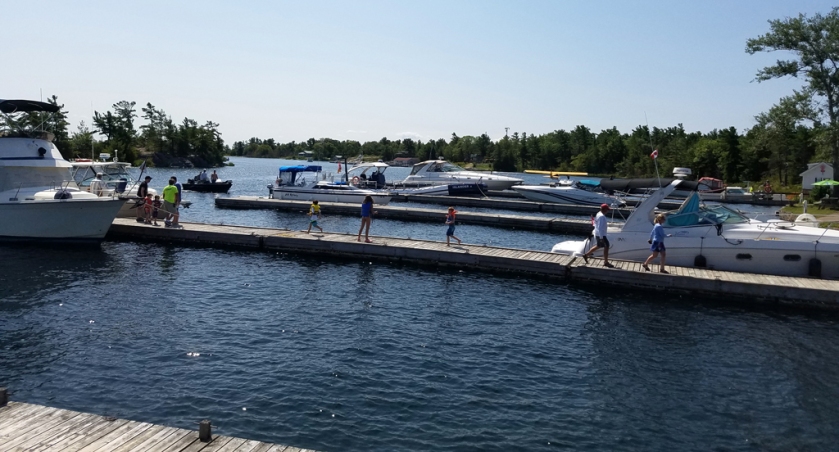
We met a few Loopers who stopped for a meal and then anchored elsewhere. Carefully timing our dinner for a less busy period, we enjoyed our fish, although portions were huge and we certainly didn’t need the appetizers! Something strange is going on with the reviews. The owners took over the restaurant last year, and locals have been trashing the place on both Trip Advisor and Active Captain, and even spreading unfounded rumours at nearby marinas. We enjoyed our visit very much, and felt bad for the owners, who are certainly putting great efforts into making it a great experience.
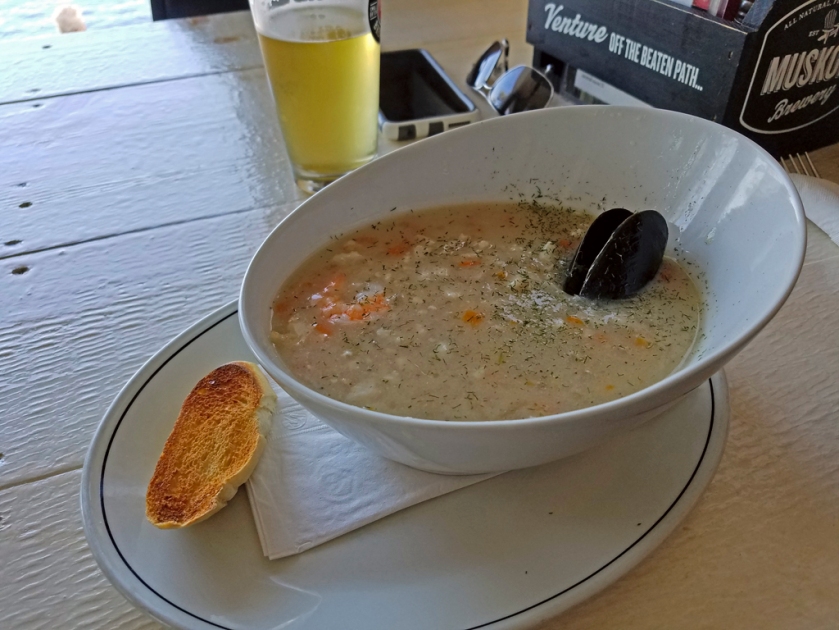
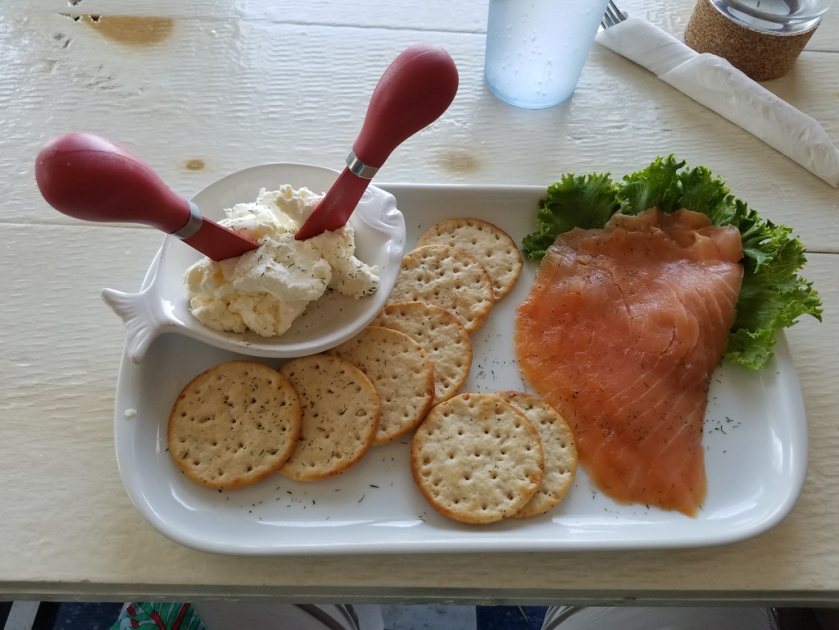
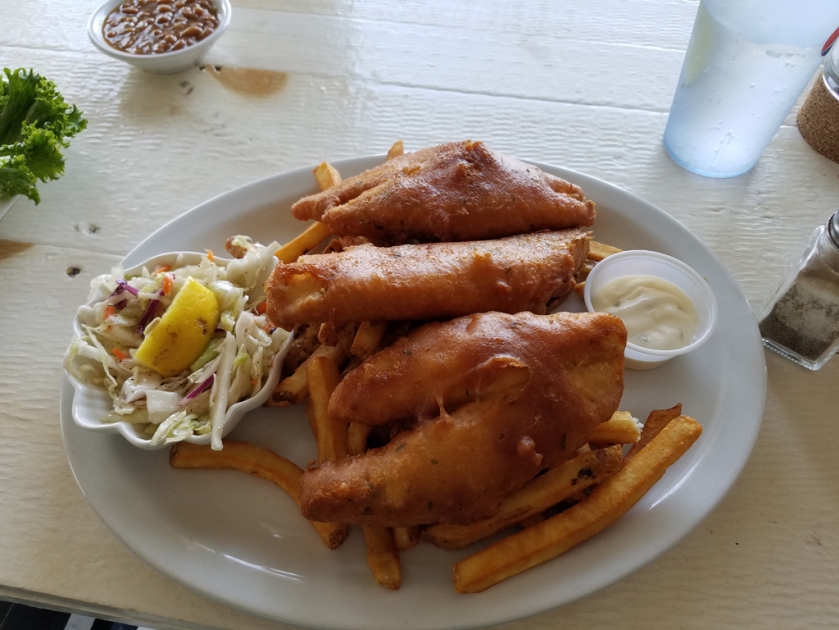
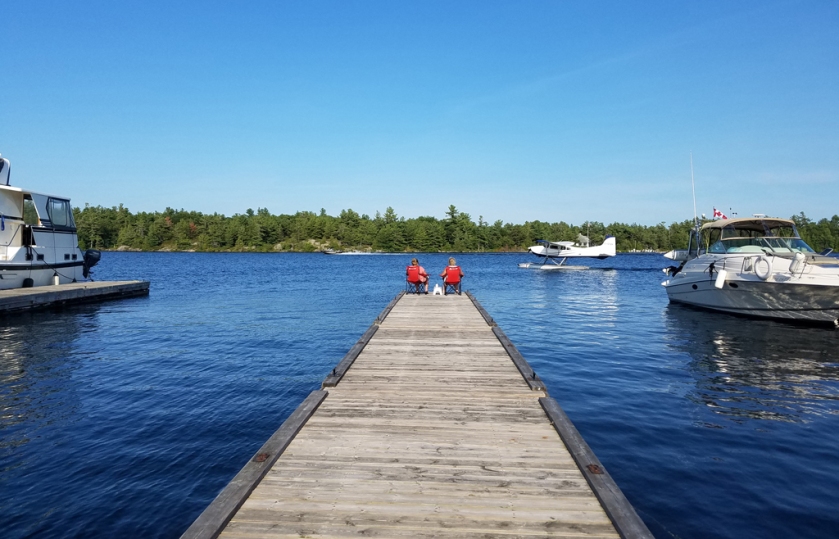
Leaving Henry’s, we had a pretty trip to Parry Sound. Georgian Bay was unusually calm, so we chose to avoid the white-knuckle channels and go around outside. In Parry Sound there were 8 Looper boats in the first evening, and a get-together for docktails on the shore. Among the stories exchanged was an experience with Canada Customs. The wife happened to have some CBD oil on board, which she declared when asked. They were immediately told to stay on the boat and wait for an inspection. Said CBD oil was confiscated. What made everyone laugh, was the helpful Customs inspector told the lady she could buy a replacement at a shop less than half a block from where they were tied up! The chuckles were not over, we next heard that upon arriving in the store, the husband noticed pre-rolled joints for sale. Suddenly feeling nostalgic for his student days, he decided to buy one. Returning to the boat, he smoked a little of it, concluded that the experience was not quite the same as his memories, and tried to put it out. He had us all laughing as he described trying to get this thing to go out, without success. A great storyteller! He concluded “they don’t make ‘em like they used to!”
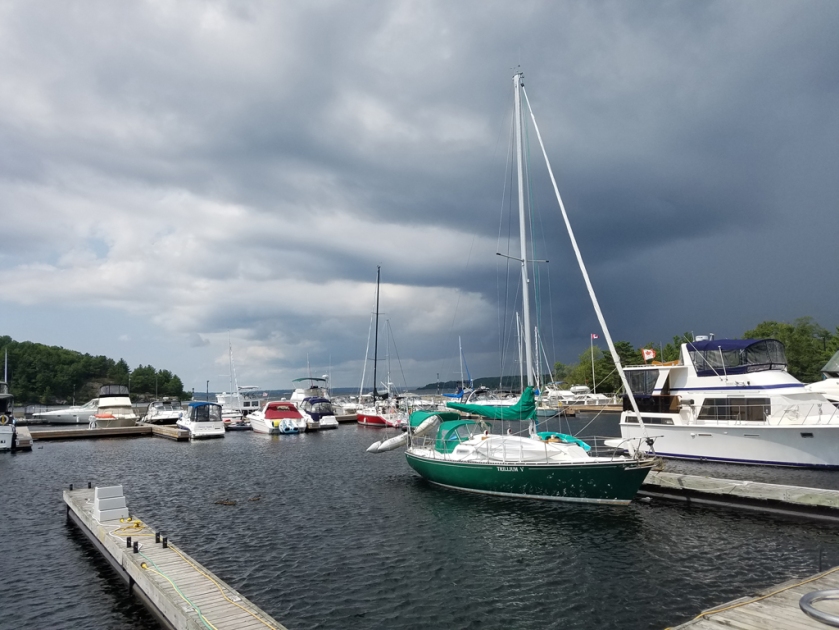
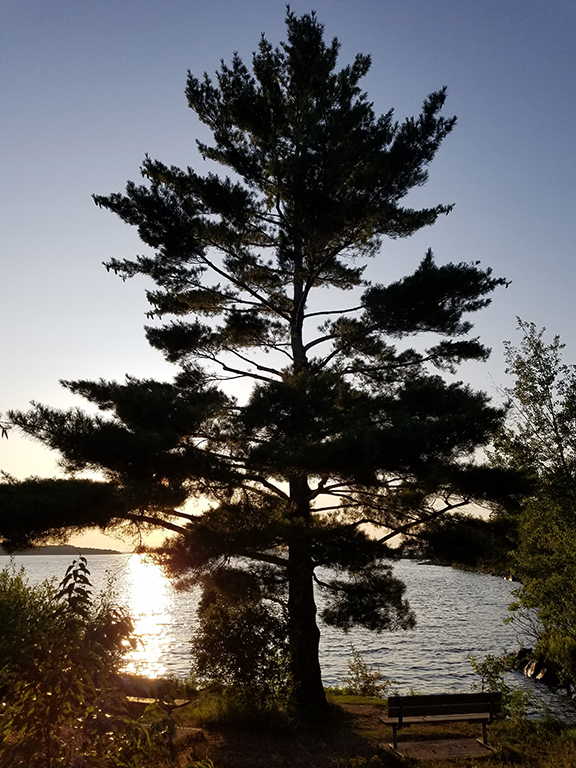
While in Parry Sound we booked a meal at Log Cabin Fine Dining. Dick discovered that Trip Advisor had the location wrong, instead of a .8-mile bike ride it was 4 miles away. For only the second time in our Looping travels we had to call a taxi. We were joined by our friends Brenda and Bruce from B-Side, and the meal was worth the taxi and then some. In fact, we are booked to stay there when we travel south later in the month to attend Mum’s birthday party. The next day was occupied with general maintenance, Dick changed the oil on the generator and replaced a burned-out fan, while I did the laundry.
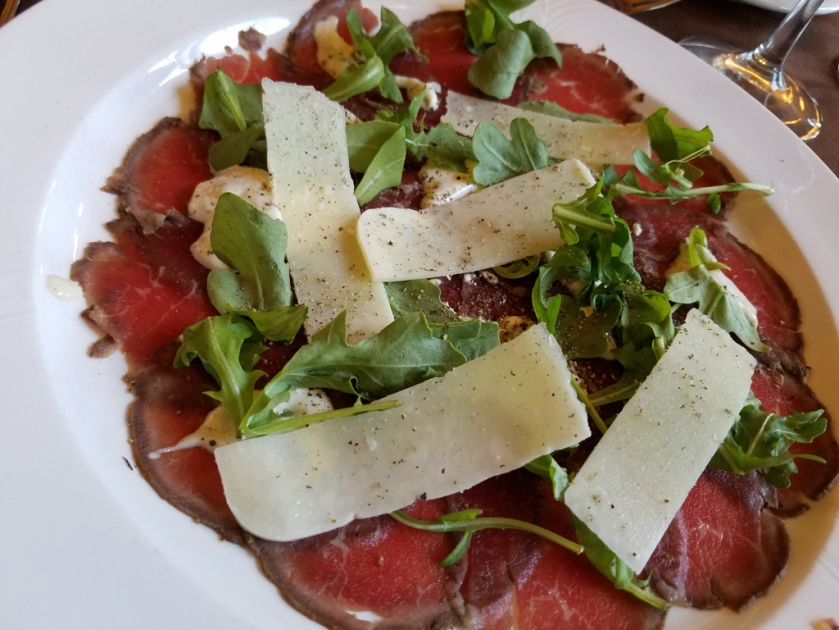
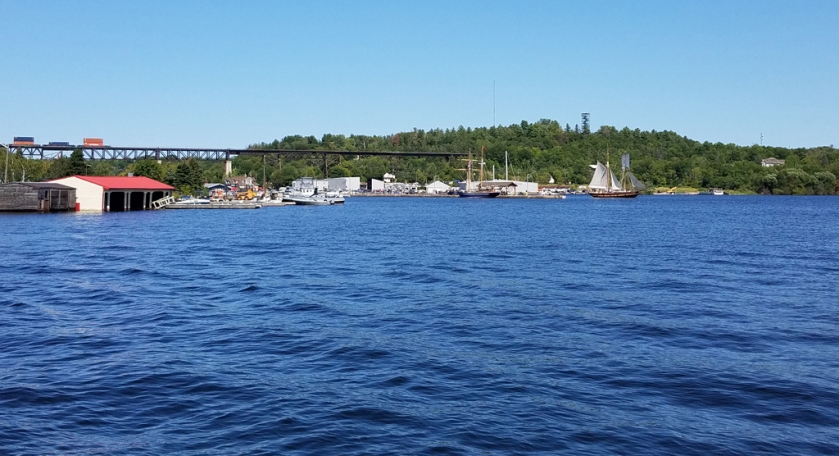
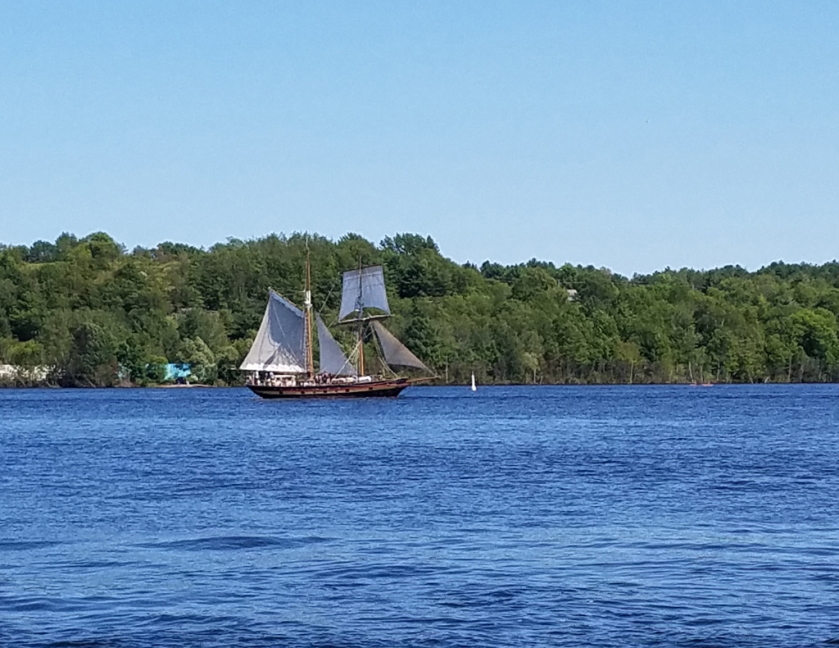
Monday was a holiday, so we continued our stay in Parry Sound. Boat cleaning day, inside and out, and then Dick did a provision run on his bike while I scrubbed the white ball fenders of all the grunge that had accumulated in the locks. The barrel fenders got their covers back on (we take them off for locks, because we find the knit fabric hangs up on the rough lock walls), and Nine Lives again looks shipshape! In the afternoon we took a seaplane tour of the 30,000 islands. It was an interesting experience seeing where we had been from the air, including flying over Henry’s, but we both agreed that the very limited sight lines of a Cessna compared to a helicopter make it not really worth the trip. I have never been in a seaplane before though, so it was a new experience.

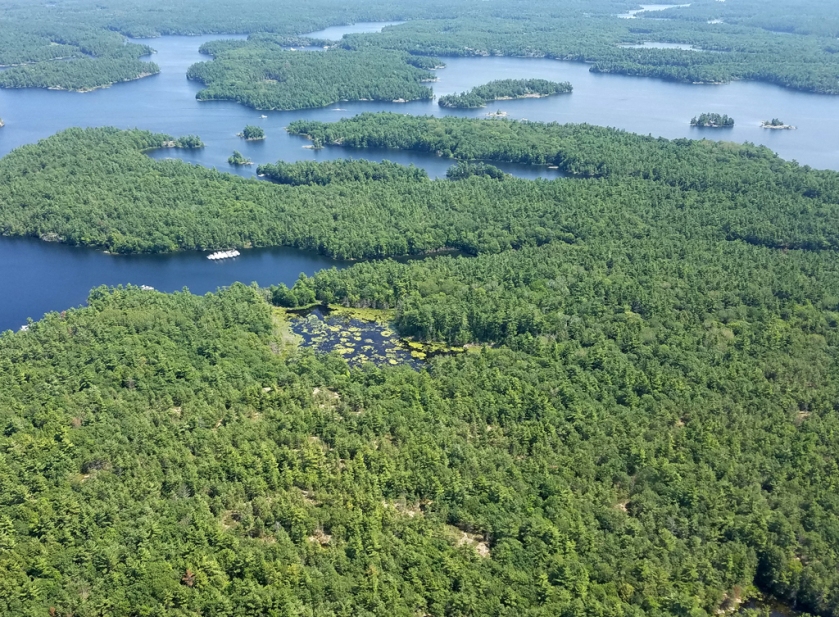
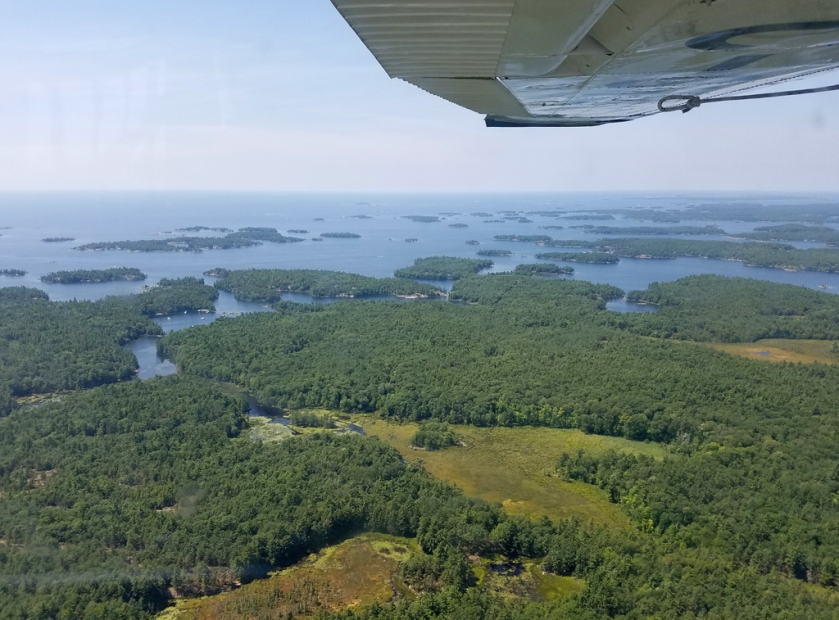
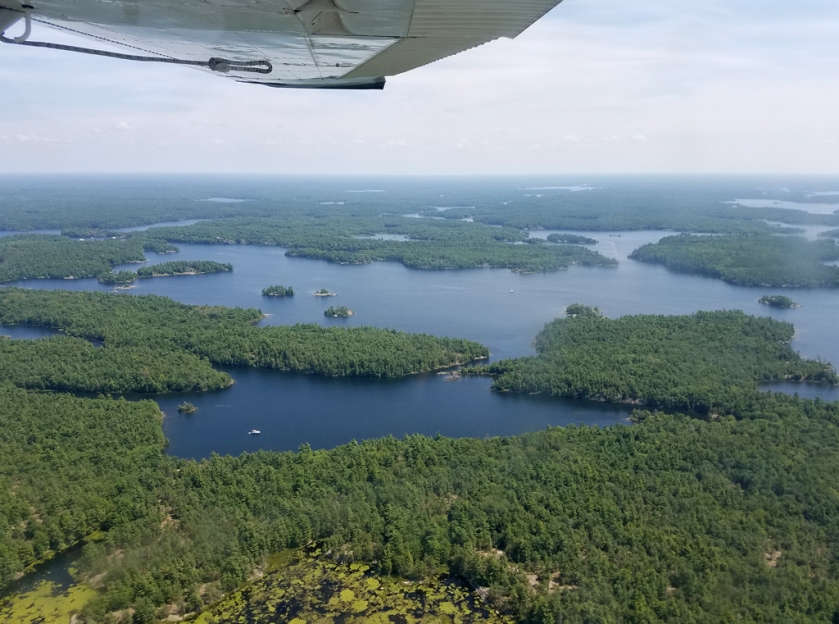
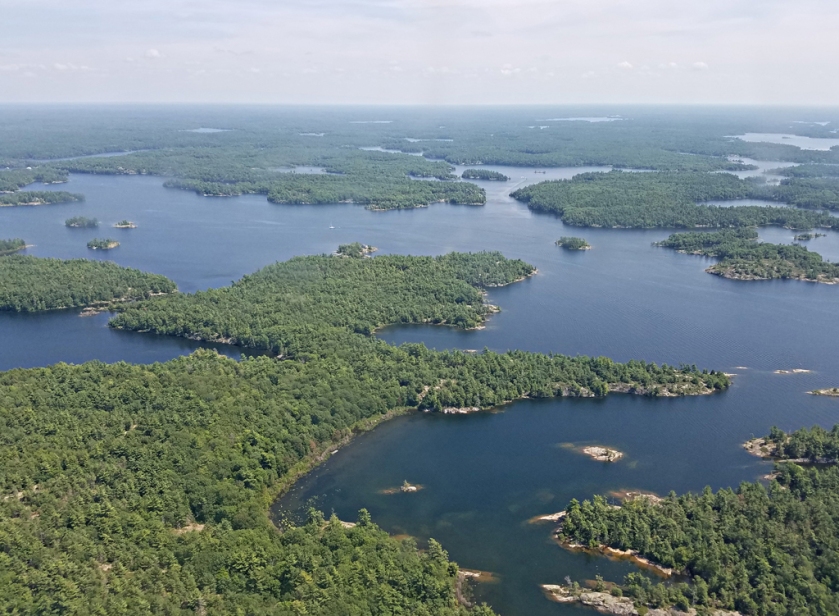
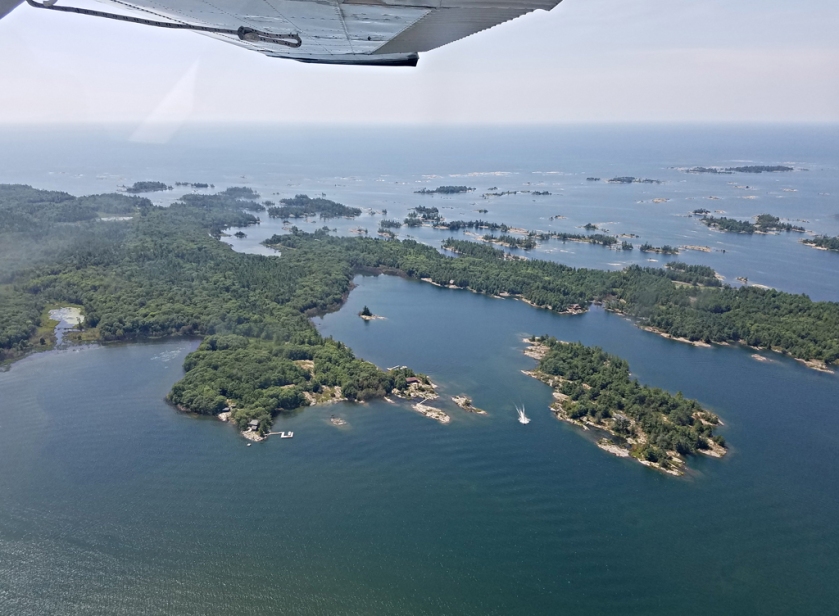
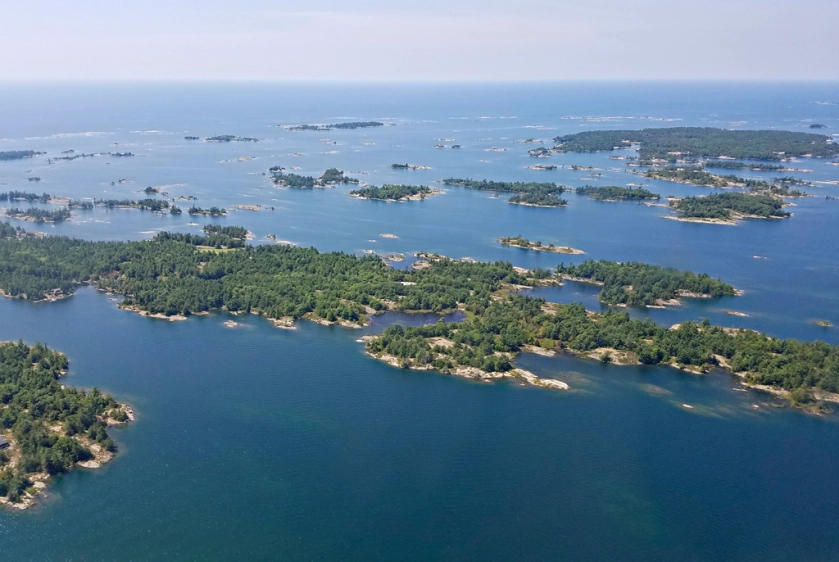
I have been musing over boat names lately. It is interesting to speculate on why someone names their boat as they do. Some are clever, such as our friends Brenda and Bruce on their catamaran B-Side (you gotta be old enough to remember 45rpm records). Last year we met Loopers whose boat was Fun. When calling marinas or bridges, they of course follow protocol, repeating the boat name 3 times. They told us half the people who hear something like “Lock 23, Lock 23, Lock 23, this is Fun Fun Fun” have trouble responding they are laughing so hard. (Not to mention hearing The Beach Boys in their heads for the rest of the day). Apres Sail ensures that everyone knows there are former sailors on board, and of course Nine Lives is named because she is a CATamaran. Red Boat is a beautifully kept sailboat with a bright red hull and matching dinghy. Some names clearly have meaning to their owners, but are not so obvious to the observer. A boat called French Toast? Sailboats are often evocative, North Star, Windrunner, Orion. But I could not believe the one I saw at Henry’s. This was a large, sleek, fast motor yacht, about 45 feet, (the kind that throws us around as they speed past us, throwing wakes that rock our boat madly from side to side), with a middle-aged couple on board. The name? Grand Wazoo. Now I realize there is a recording by Frank Zappa by that name (quite nasty lyrics), but I cannot imagine the owner has actually looked up the meaning of Wazoo. And what’s more, he is boasting that he is a really big one! (my gentle readers are going to have to look this up for themselves).

On August 6 we were again underway, this time hoping to tie up at what was called a “Government Dock” in Point au Baril Station. After traveling a long way up the channel, we arrived in what looked like an interesting village to find no evidence of the so-called government dock, and a clear sign on the public dock saying that boats longer than 30 feet are strictly forbidden from docking. Retracing our steps part way, we found a very pleasant anchorage in Kitsilano Bay for the night.
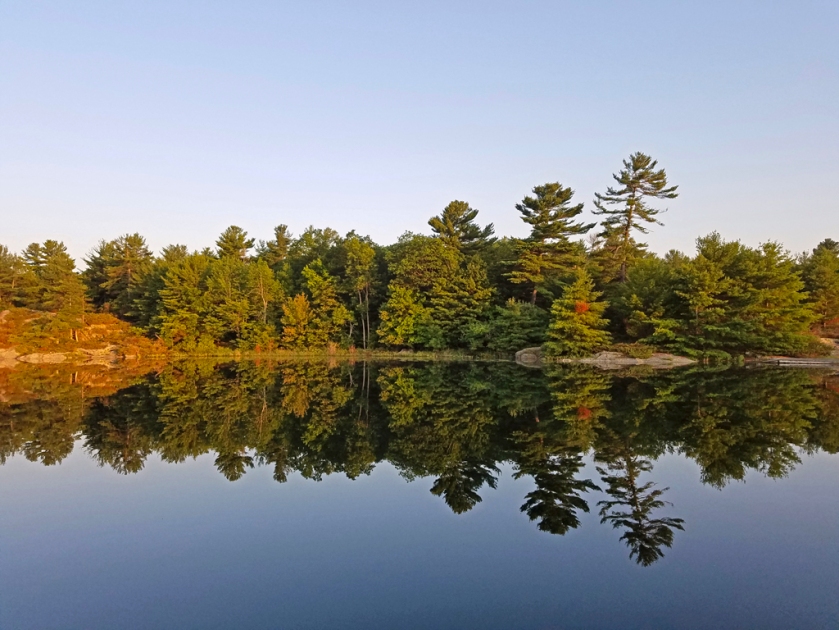
Heading out the next morning we passed one of the iconic lighthouses of Georgian Bay. In fact, almost all of the Canadian lighthouses I have seen follow a similar design. Instead of the tall round tower that is more familiar in the USA or Britain, Canadian lighthouses are often a fairly short clapboard structure that tapers to the light. They are painted white, with distinctive red trim. Many are still in use, although most are unmanned.
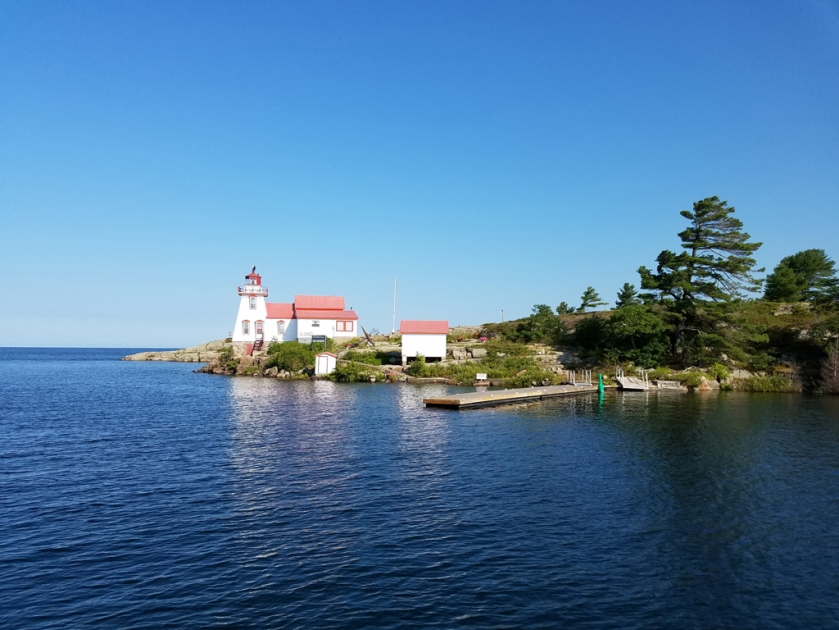
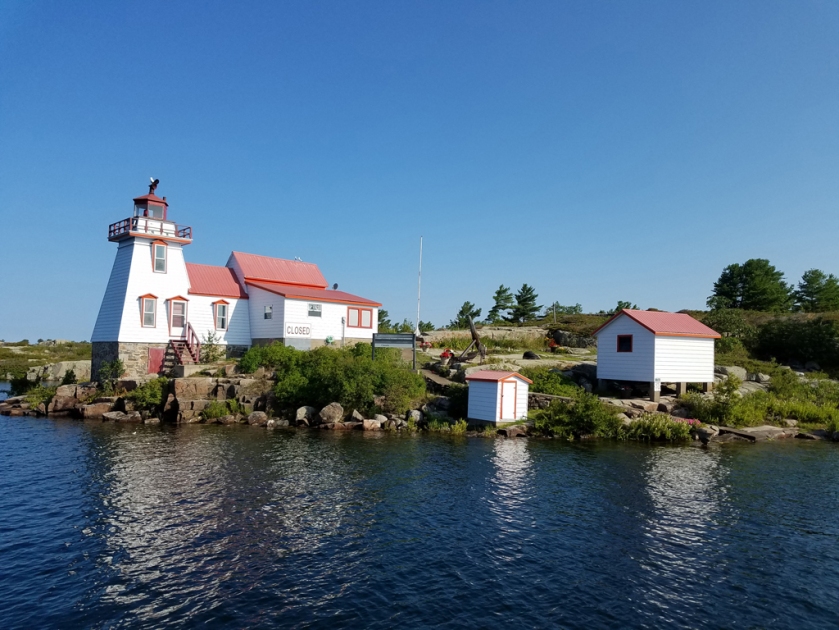
The next day our destination was Britt, up Byng Inlet. We planned to stay just one night, but high winds in the Bay kept us there for 5 nights. Not really complaining, it was only our second weather delay of this year’s voyage, compared to how much time we were stormbound in previous years. Unfortunately, there isn’t much to Britt. We rode our bikes into “town” to visit the post office, and ate a meal at the only restaurant on the way back. We got together with other Loopers the first evening for docktails. A few boats left the next morning, but we didn’t like the forecast. Instead we spent a most enjoyable afternoon playing bridge with Brenda and Bruce and listened to the wind howling around us. Saturday morning one of the remaining Loopers left at 7am, but were back an hour later reporting 4-foot waves (instead of the 1.5 foot that were predicted) and double-digit winds. We had been just about to start our engines, but we shut everything down and made another afternoon bridge date. Finally, Sunday with a 6:30am start we were able to say goodbye to Byng Inlet. We are too large for the so-called small craft channel, especially on windy days, so we ran outside at our top speed of 18 knots. It was unpleasant at first, but gradually the waves settled down. We were glad we had taken the picture off the salon wall and generally prepared for rough seas. We had forgotten that when it is very rough the water actually splashes up into the bathroom sinks. Dick thinks this is an excellent way of clearing the U-trap of any accumulated crud.
We turned off Georgian Bay into Beaverstone Inlet and then made our way along Collins Inlet. This was one of the most scenic routes we have seen. It was a geology lesson in miniature, more rugged than further south, but stunning.
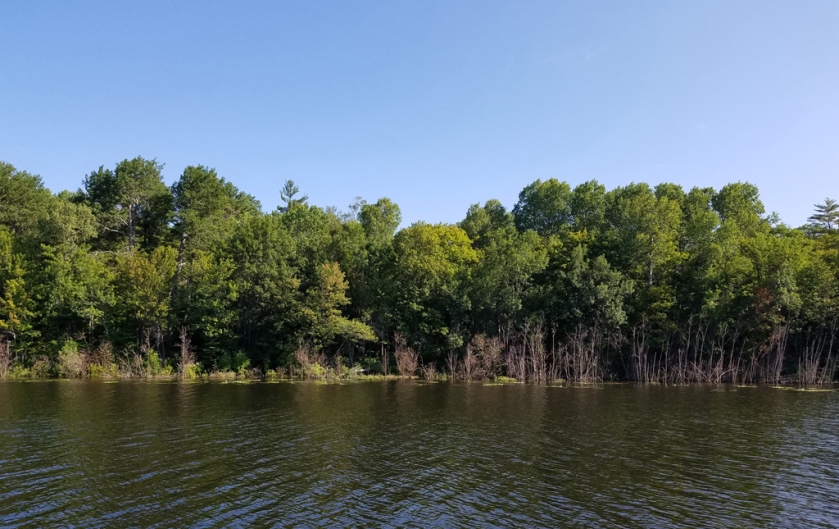
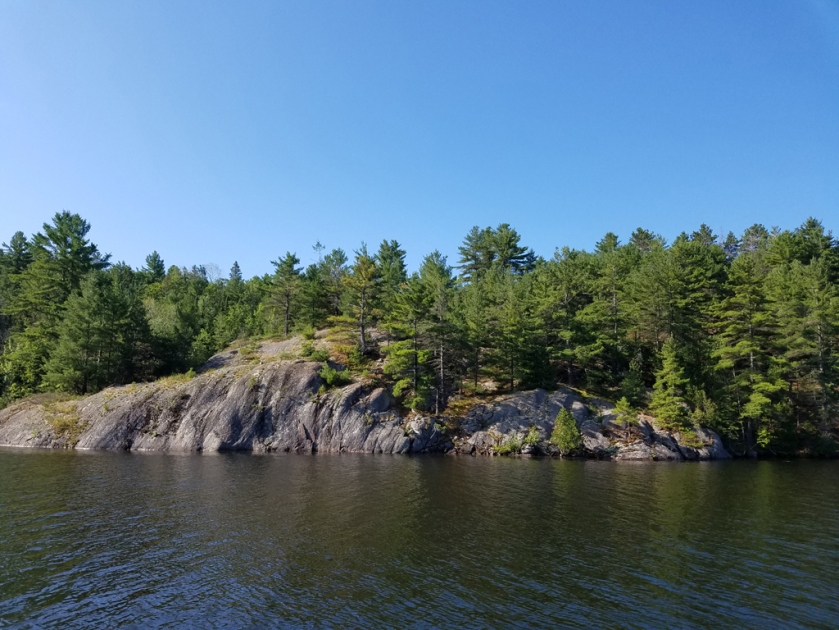
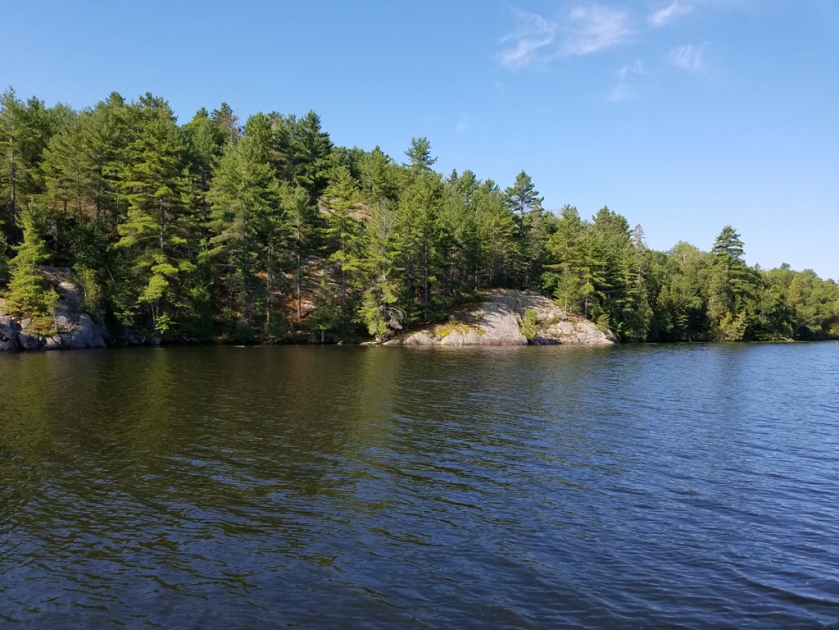
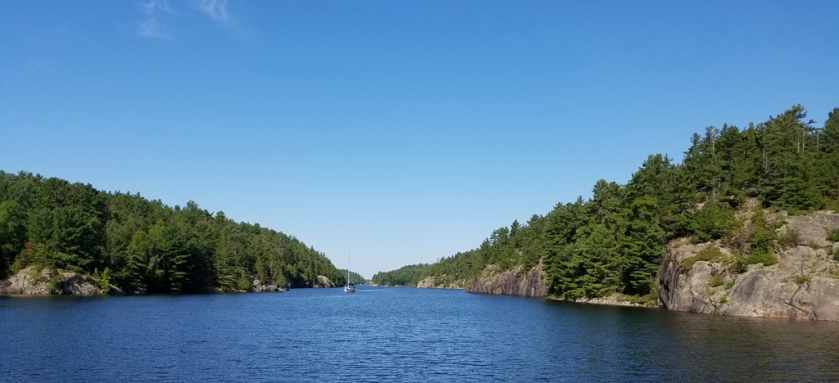

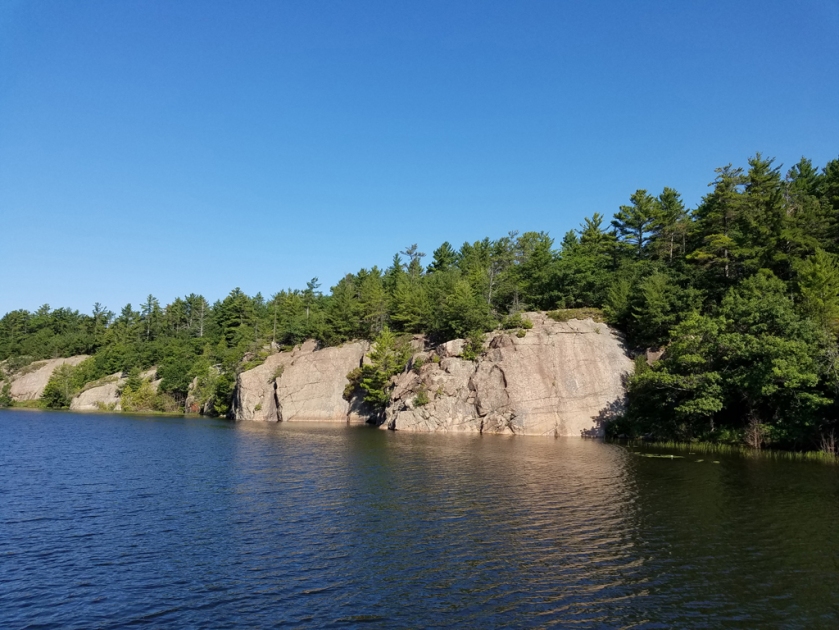
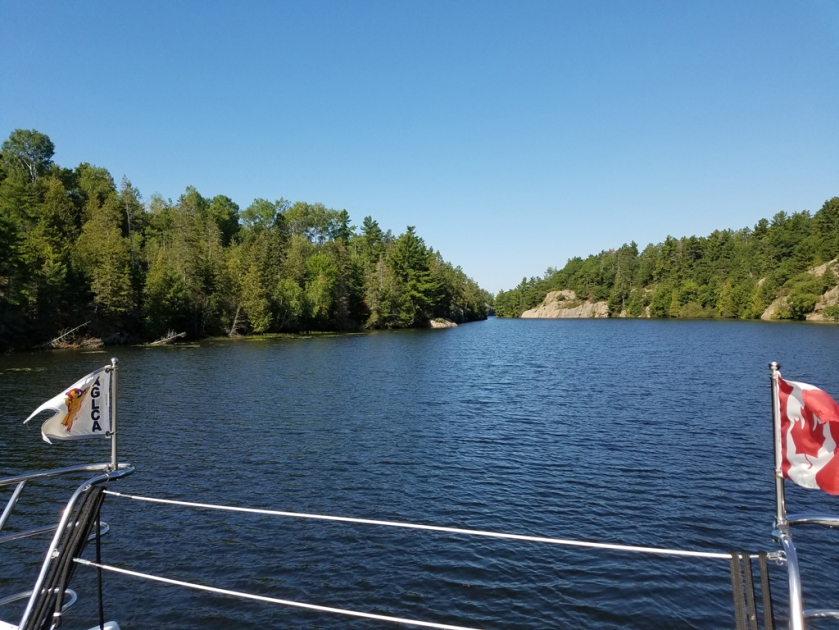
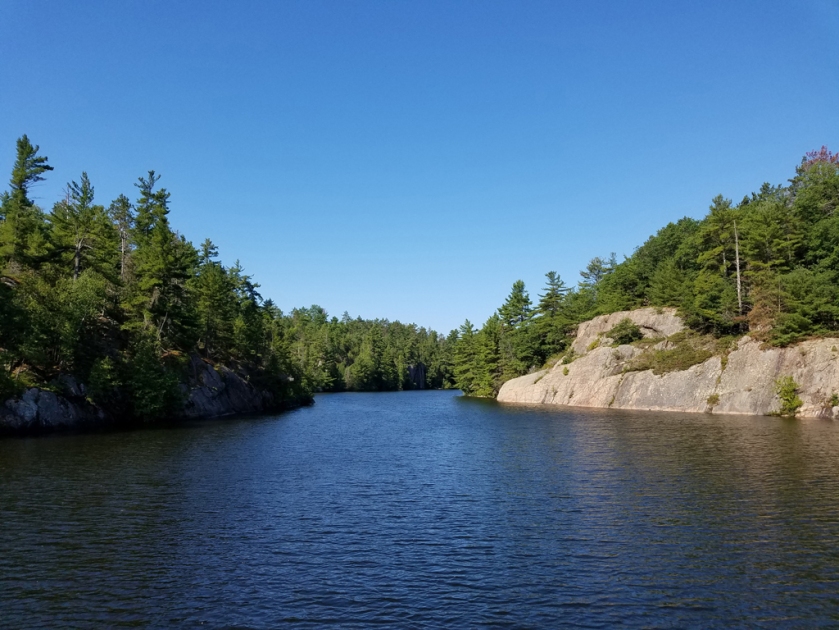
In Killarney we tied up at Killarney Mountain Lodge. The marina has good docks but inconvenient showers and unusable wi-fi. Nevertheless, it is an enjoyable stop and I always like watching the boat traffic. Docks there are long, requiring boats to be moored two-deep. We arrived and were trying to tie up behind another boat, with a very strong current pushing us off the dock and dockhands who were very young, confused, and incapable of taking instructions. The owner of the large boat in front of us was also trying to explain to us that he would be leaving in the morning and we should tie up elsewhere. Apparently the Dockmaster had left for the day, and the young lady in charge was clearly inexperienced. Announcing ourselves before arrival as a 44-foot catamaran with a 19-foot beam was apparently unclear to her. Eventually we were moved to a more suitable slip. Meanwhile, the other captain proved to be a very friendly and chatty individual. He entertained us with his story of the morning before. He had bought a muffin at the small kiosk on the shore, and was eating it when he noticed a small dinghy coming into the dock. Helpful chap that he is, he stepped up and took the line and was just starting to tie it up when the Labrador on board lunged forward, snatched the rest of the muffin out of his hand and wolfed it down! Apparently, the dog’s owner was desperately embarrassed and insisted on replacing the muffin.
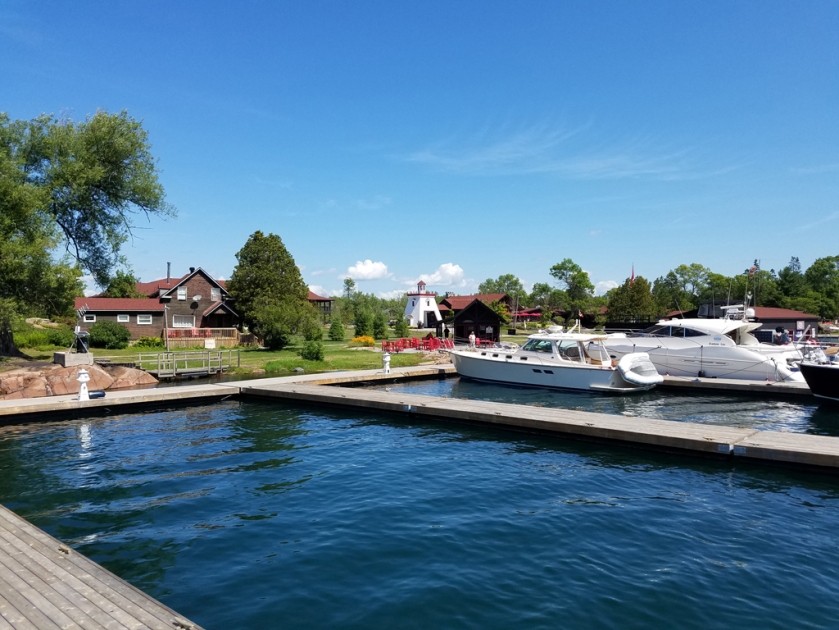
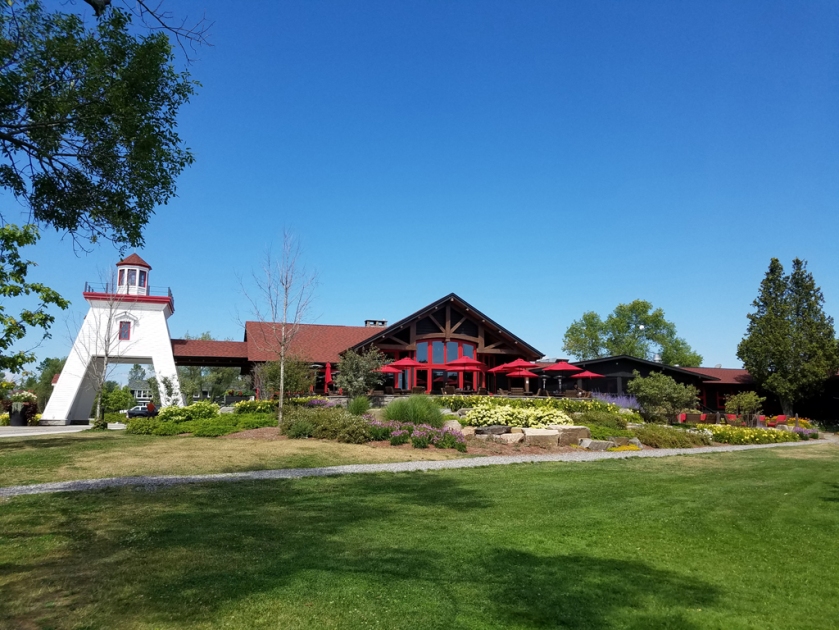
We ate at the nearby Sportsman Inn that evening. Nice aspect overlooking another marina in the channel, food very tasty but rather overcooked. The next morning Dick prepared one of his special breakfasts on board. Later, I began working on the blog and became aware that someone else obviously likes Scottish music. The music got louder, and I looked up to see the tall ship Madeline moving majestically down the channel with a piper on the foredeck!
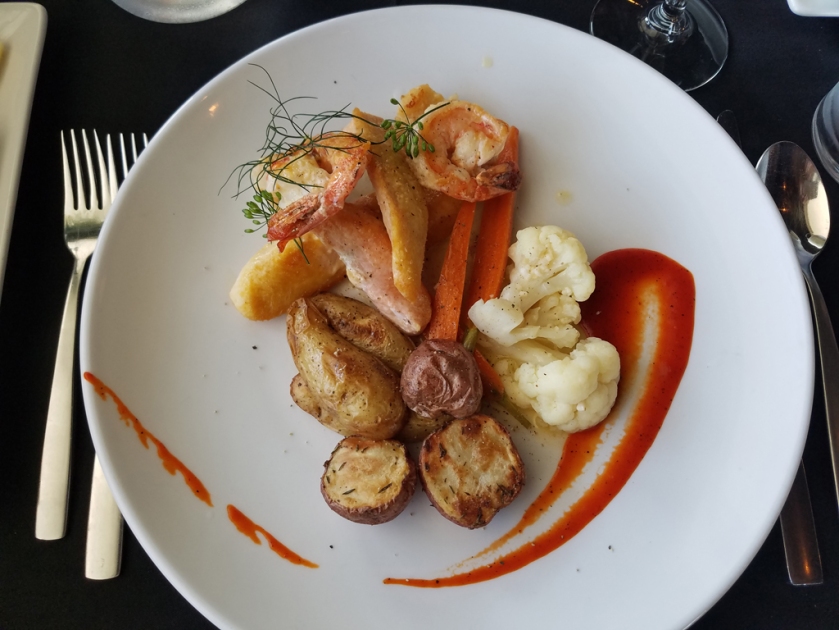
Killarney is a small village about 25 miles from the mining city of Sudbury. It relies mainly on tourism, including fishing camps, boating, and general wilderness pursuits. It was first settled in 1820 by a French Canadian fur trader and his Anishinaabe wife, who established a trading post. Road access to the small community did not arrive until 1962. The town population is less than 500, but between the 4 marinas and two large hotels, it is bustling in the short summer season.
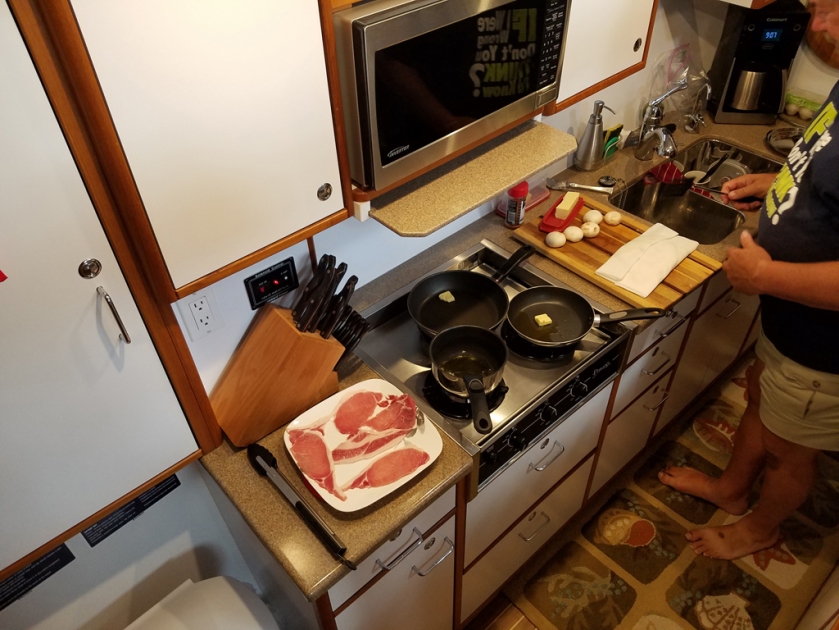

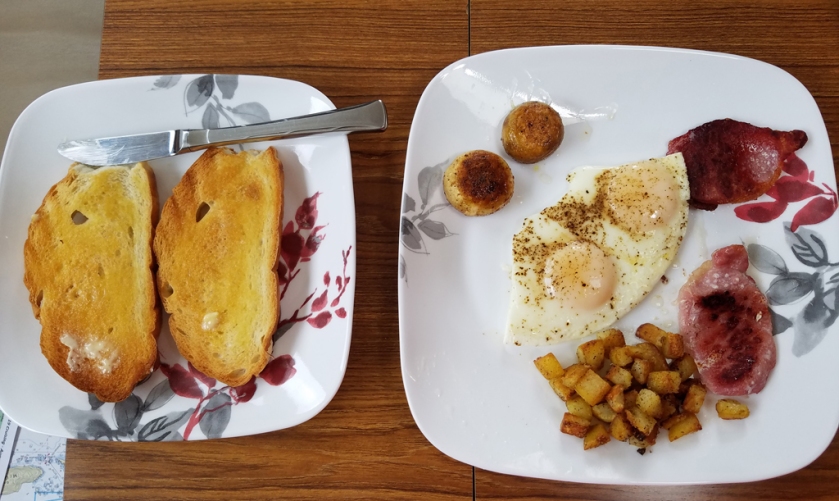
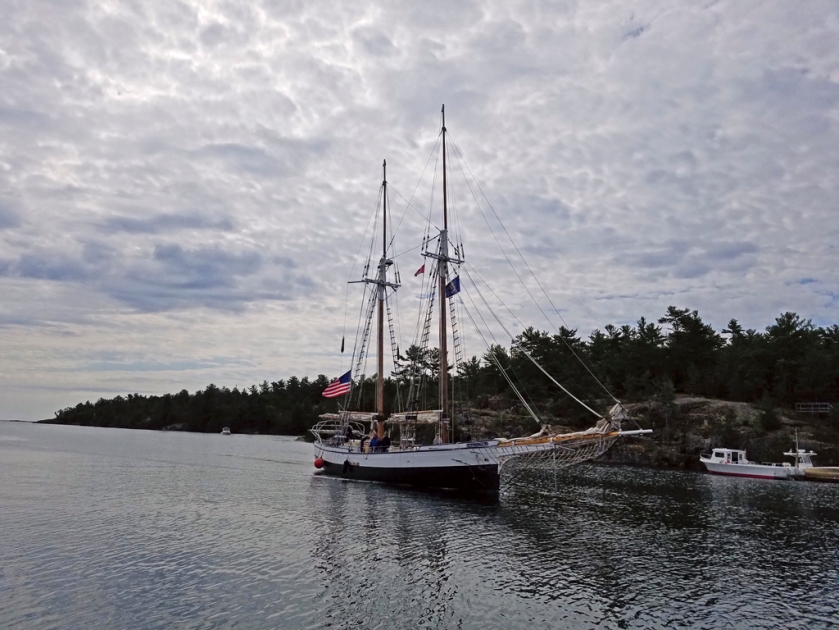
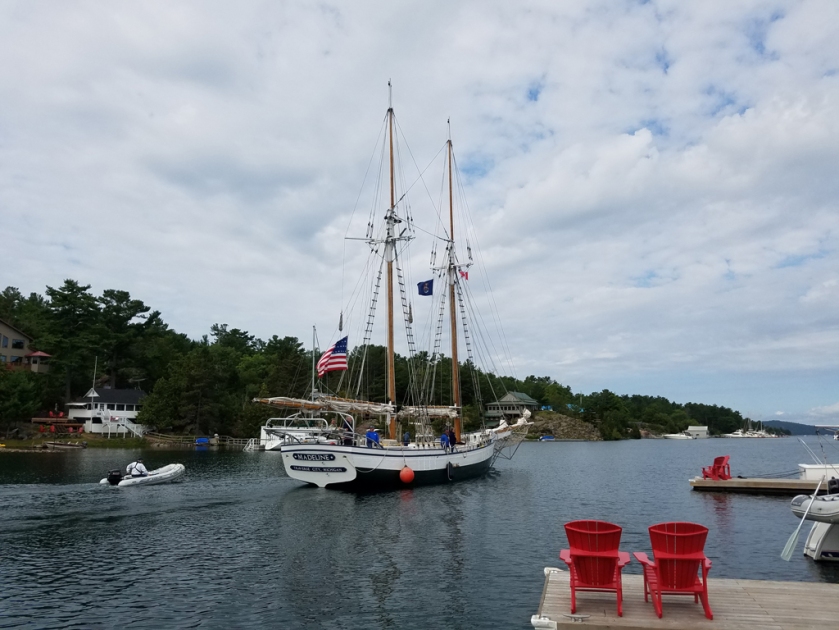
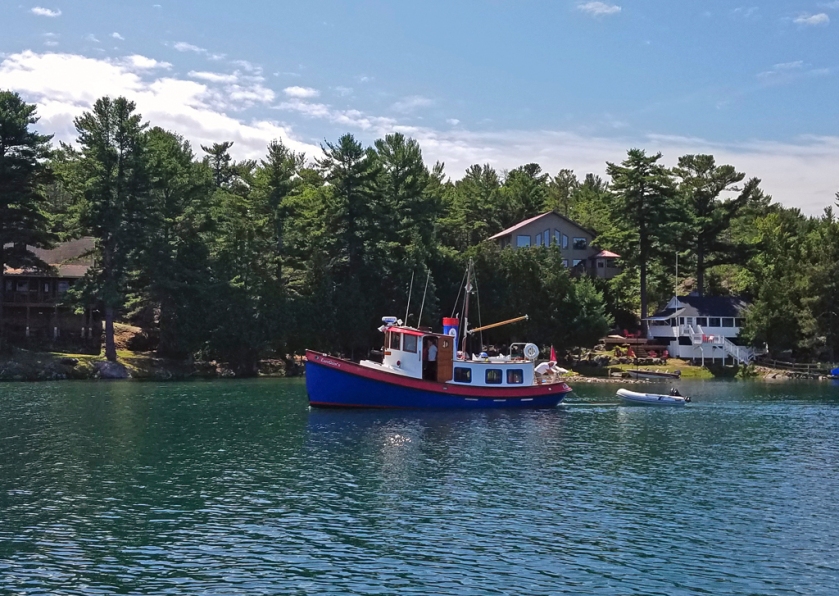
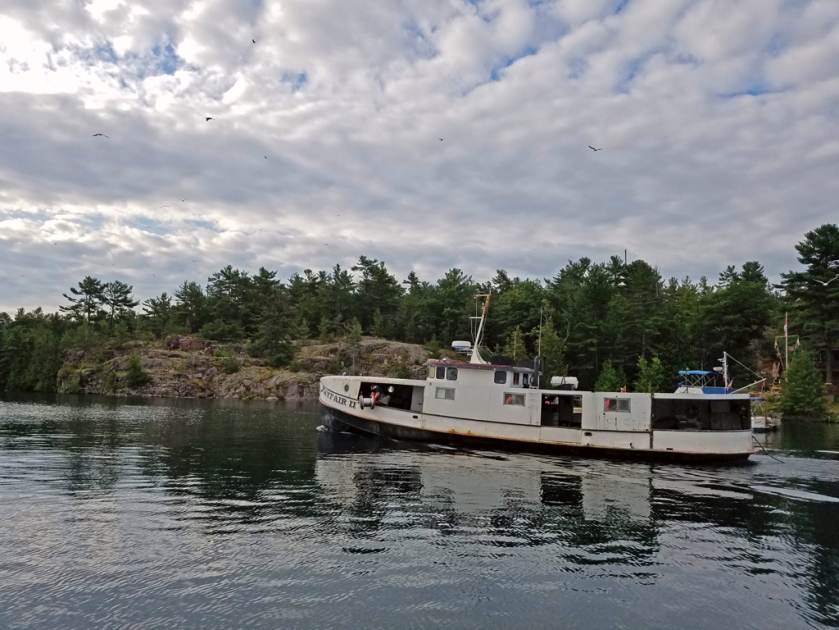
We were delighted to see Brenda and Bruce arrive on B-Side the next day. We keep saying goodbye and then find ourselves once again in the same place. One of the great joys of Looping! We relaxed in the shade on the very comfortable chairs and then repaired to Nine Lives foredeck for docktails.
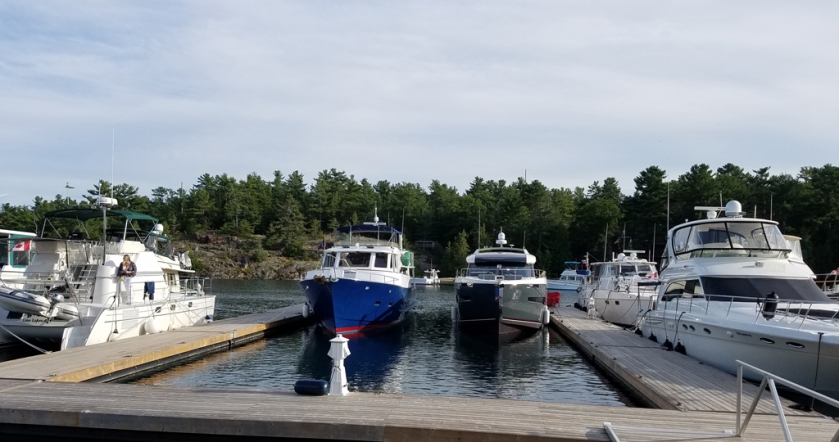
Dinner that evening at the Lodge was excellent, such a contrast to the experience at Sportsman Inn, even though they are under the same ownership. Afterwards we went to the lounge to listen to the live entertainment. This was a young man, who brought with him at least 10 instruments. His music was a mix of Celtic and Canadian folk, with a few light rock thrown in for variety. He was a very talented player. What made his performance absolutely fascinating was a machine he called a “looper”. He would begin playing an instrument, and the looper recorded it. He would then play back the recording and accompany/harmonize, laying a new recording over the first. It was quite an amazing presentation, especially when he would switch instruments to add to the mix. He sang one song a capella, using two mikes, and gradually building up the chorus while singing the verses with the single voice. A most enjoyable evening!
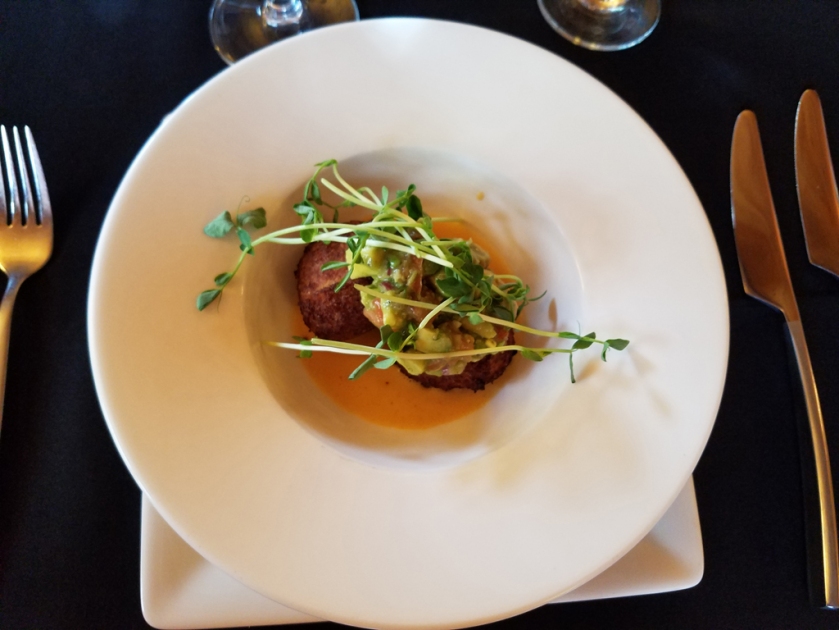
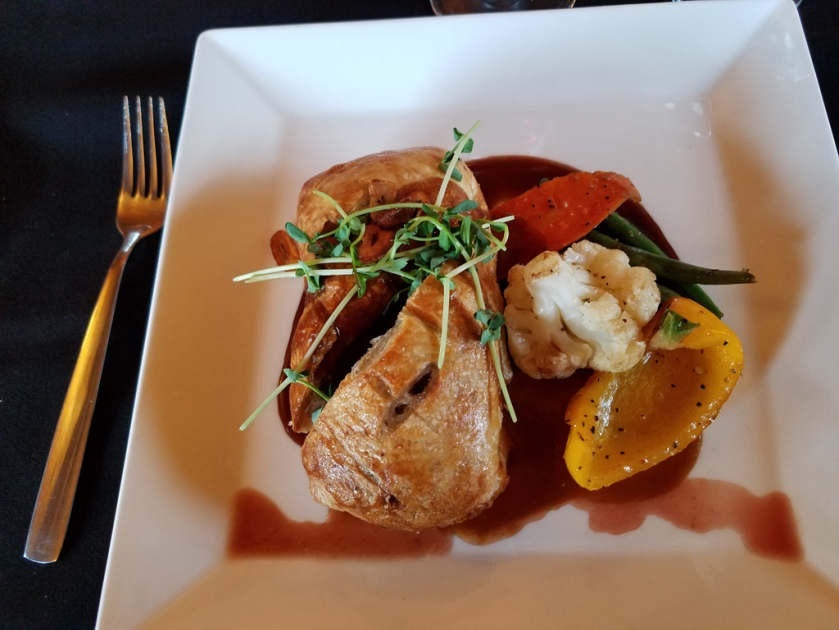
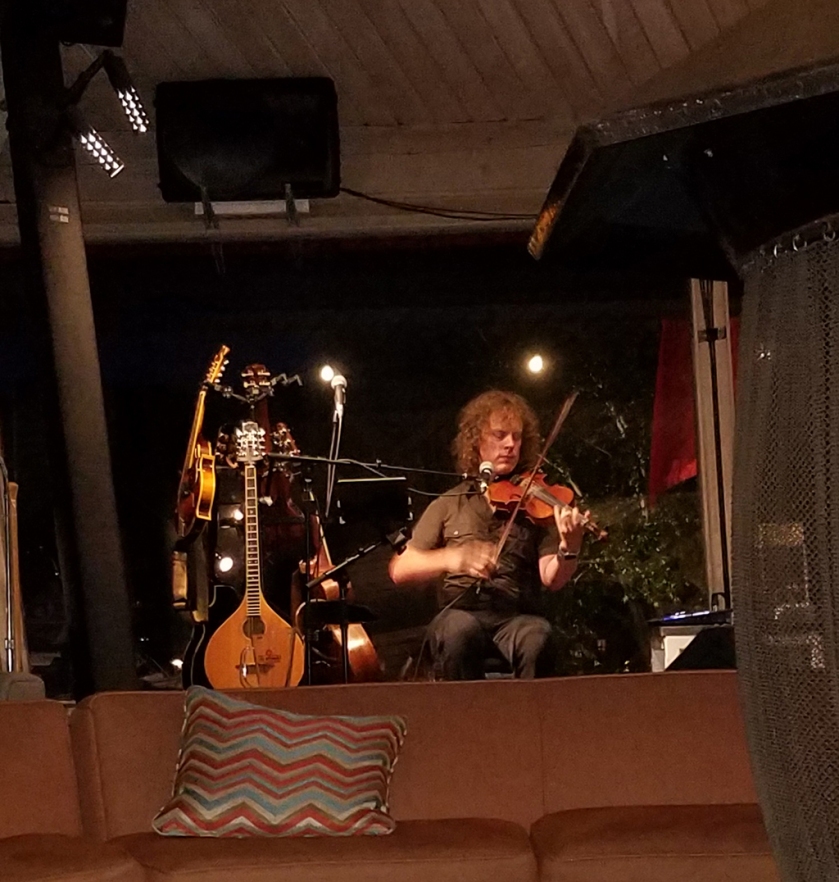
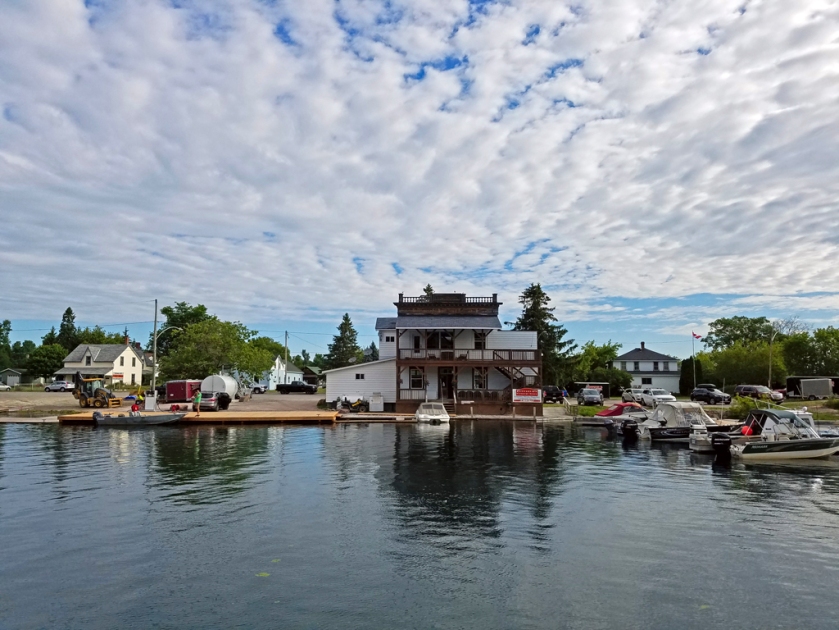

The next morning, we set off for Little Current on Manitoulin Island. One must pass under a bridge, formerly a railroad bridge, now converted to a single lane highway bridge. It opens only on the hour, but normally we would easily pass under its 20-foot height when closed. We still approached very carefully, knowing that this year’s high water is at least 5 feet above chart datum, and were preparing to ease under when the bridge tender kindly stepped out of his hut and called down that the bridge height is 13 feet. That would be 1.5 feet lower than we can duck under, so Dick had to reverse and wait for the opening, fortunately only 10 minutes later. Not an easy job, the current under the bridge in Little Current is not so little!
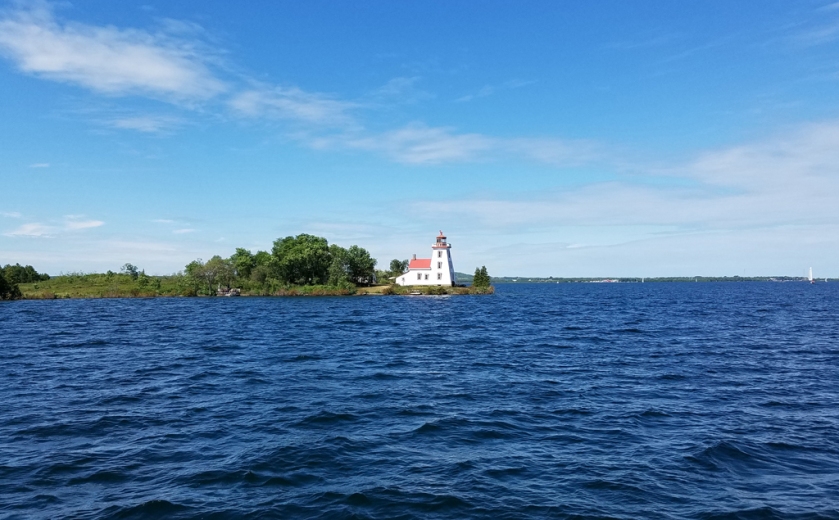
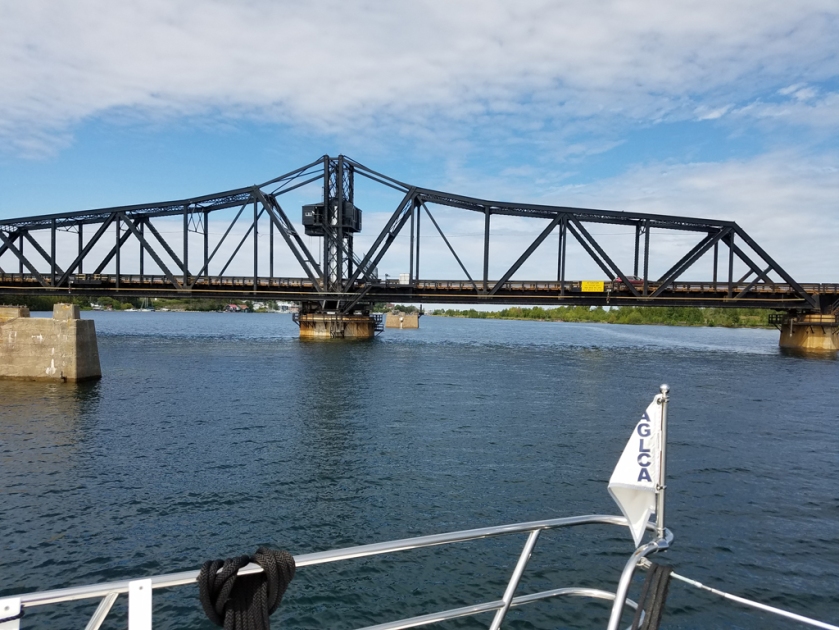
Little Current was first settled in the late 1860’s, and is the main town on Manitoulin Island. An important port for Great Lakes shipping taking on wood for fuel in the 19th century, today lumber is still an important part of the economy, along with agriculture and tourism. It is a well-kept village, with an outstanding municipal waterfront facility. The town wall is available for short term docking, and several floating docks make up the marina. Dick reports that the washroom/shower facilities are excellent, and well-spaced for access from all part of the marina. This should be obvious, but believe me, in so many places it isn’t. We were docked right beside the boardwalk. It is always enjoyable to watch people and boats coming and going and chat with passers-by.
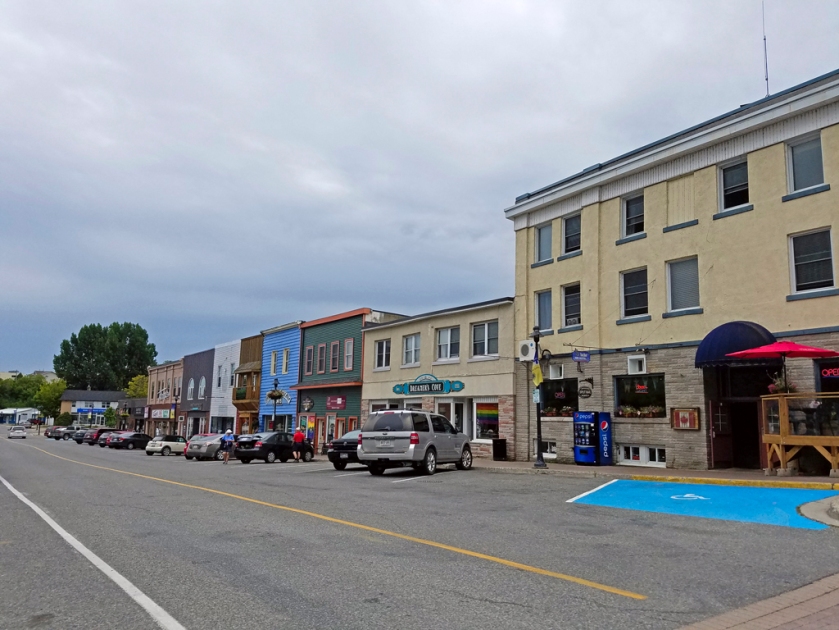
Our next stop was Gore Bay, a deep V-shaped bay on the north side of Manitoulin. Docks at the marina are so long that the dockhands ride bicycles to get to the slip and help tie up. It is interesting how different people have different perspectives and reactions to the places we visit on the Loop. One Gold Looper we met waxed lyrical about Georgian Bay’s North Channel, telling us it is the most beautiful place he has ever cruised. In addition to completing the Great Loop, his usual cruising ground is the San Juan Islands off the west coast, and he spent last summer in Alaskan waters. To be honest, once we left Killarney and entered the North Channel, Dick and I are still waiting to see this amazing scenery he was talking about! So far it is attractive, but by no means the most beautiful we have seen since beginning the Great Loop! Another couple who cruise these waters most summers, when asked for recommendations by Dick, suggested spending two nights in Gore Bay. Once again, we are wondering why!
The next afternoon we rode our bikes the 3 kilometers to Janet Head Lighthouse, at the top of Gore Bay. The lighthouse is in private ownership, but it is open to visitors during summer months. Janet Head Lighthouse was built in 1879. The light, still operational, although now unmanned, can be seen for 11 miles into the North Channel. The building was built as a combination light station and home for the keeper and his family. The first keeper had 11 children. We wandered around inside, and found it surprisingly spacious, with 4 reasonable bedrooms, parlour, kitchen, and another front room. We could see that there is also a cellar, which would have been used as a cool room. During summer months the lighthouse was a warning beacon for Great Lakes shipping. In winter months it also directed sleighs carrying the mail along an ice highway from Gore Bay to Spanish between 1910 and 1924. This 35 kilometer route is still followed by snowmobiles in winter.
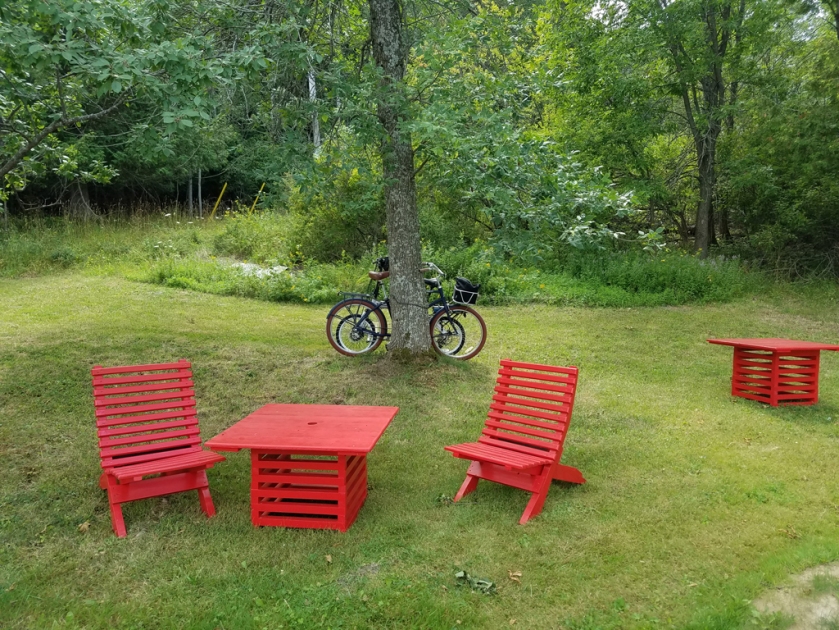
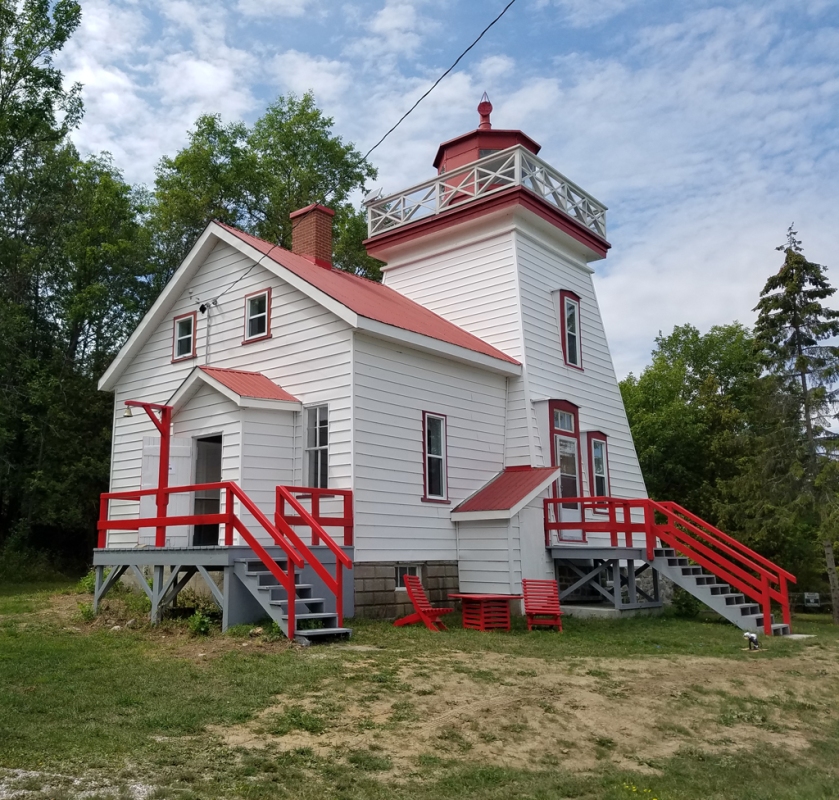
After visiting the lighthouse, we retraced our route and followed the bay around to its southern end. There is an important wetland and salmon run, and a boardwalk with interpretive signs offers visitors a chance to enjoy nature. We finished the day with excellent pizza at the restaurant near the marina.
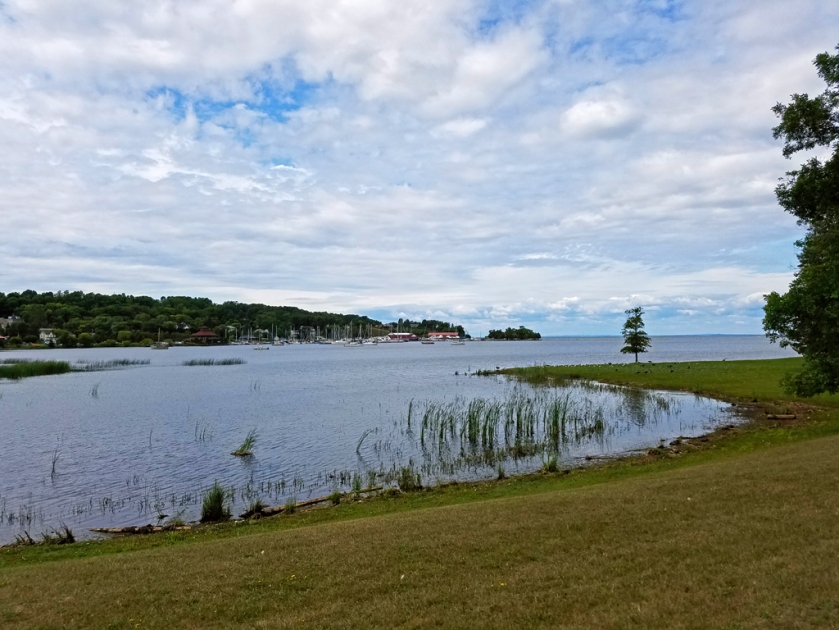
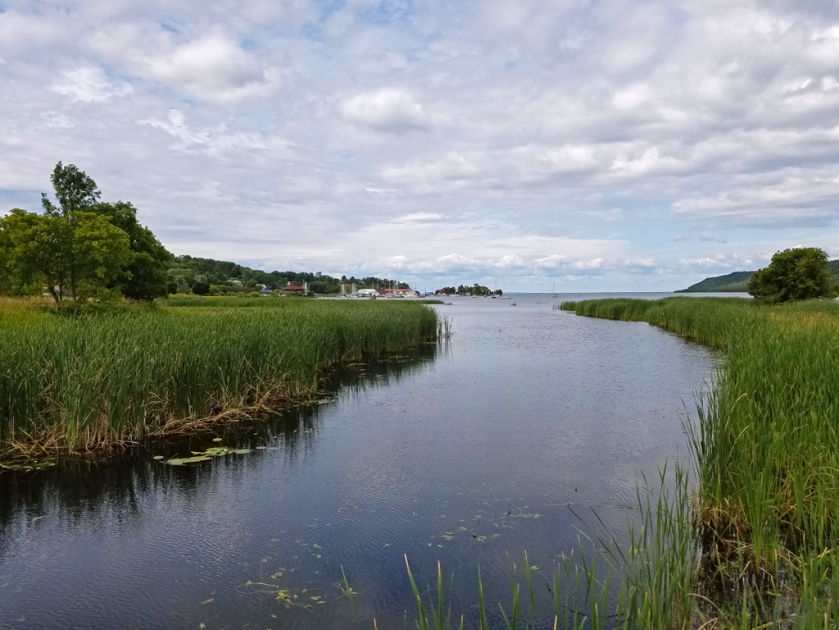
This update will likely be the last for a few weeks. Upon arrival next week in Sault Ste Marie, we will be taking 10 days to return to Brighton for Dick’s mother’s 90th birthday party. Returning to the boat, we will visit Sault Ste Marie and then make our way to Drummond Island, where Nine Lives will enjoy a well-earned rest for the winter.


